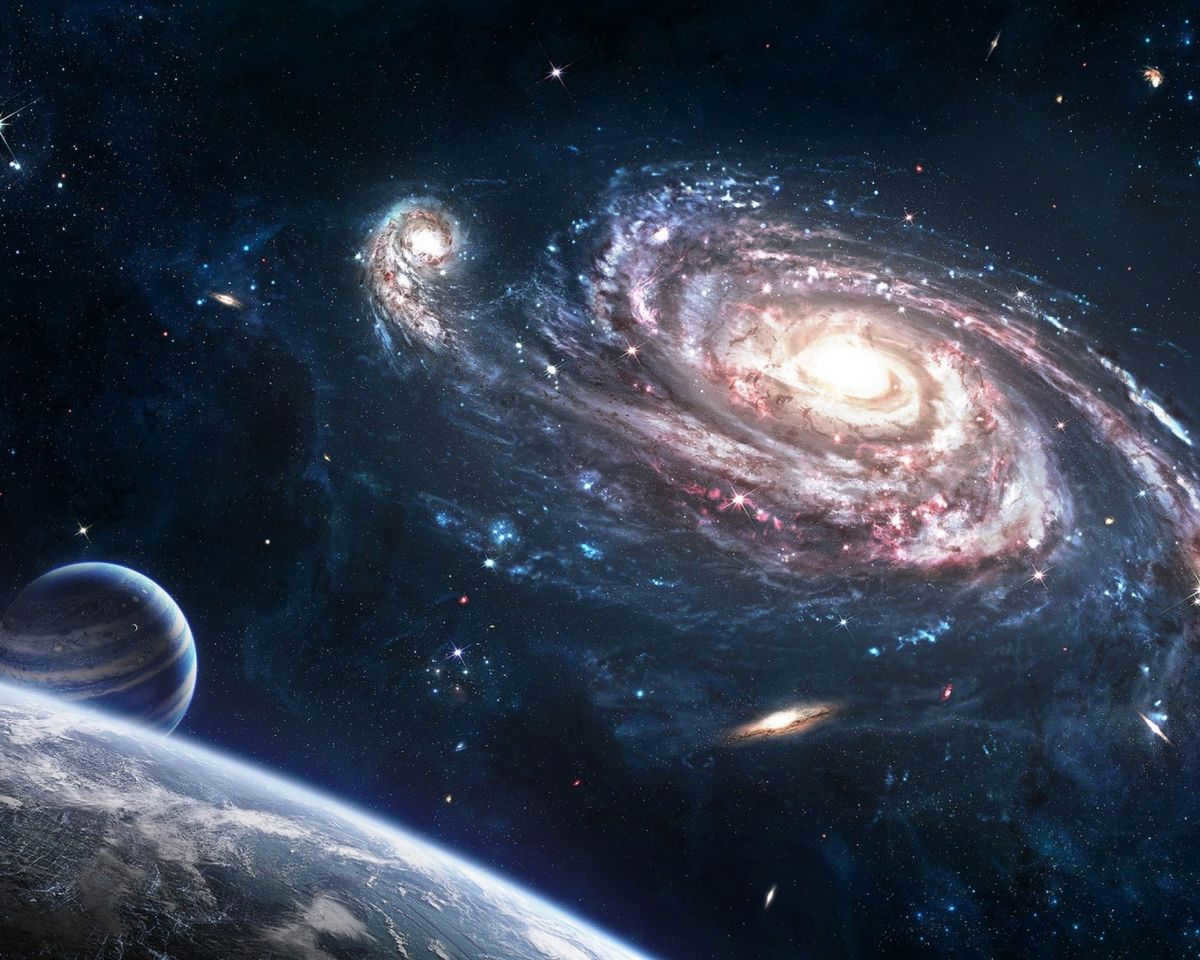
How did the universe we are familiar with come into existence? And how can we account for its inception? Undoubtedly, all the other evidence and facts that cosmologists have amassed throughout the years indicate that it may have all originated from a “big bang.” However, what if there is more?
In 1927, Georges Lemaître, a Belgian astronomer, was the first to propose the notion of an expanding universe (later confirmed by Edwin Hubble). He posited that the expanding universe could be traced back in time to a singular point, which he dubbed the “primary atom.” This laid the groundwork for the contemporary Big Bang theory.
The concept of the Big Bang Theory is centered around a mathematical framework that aims to explain the origins and development of the universe.
According to this cosmological model, the universe initially underwent a rapid expansion from a state of infinite density and temperature, referred to as the primordial or gravitational singularity. This expansion was followed by a period of cosmic inflation and a significant decrease in temperature. During this phase, the universe expanded at a rate much faster than the speed of light (10,26 times).
As the universe continued to evolve, it reached a point of extreme heat, causing the formation of elementary particles such as quarks and leptons. Over time, the temperature and density gradually decreased, leading to the formation of protons and neutrons.
The cosmic ultra-high-frequency background radiation (Relict radiation) is the key component of the Big Bang model. It is the electromagnetic radiation that is leftover from the birth of the Universe. Relict radiation is considered to be the most convincing proof of the big bang theory.
Although the theory is widely accepted in the scientific community, there have been alternative explanations that have gained popularity over time, such as the idea of a stationary universe and eternal inflation.
7. The concept of everlasting inflation
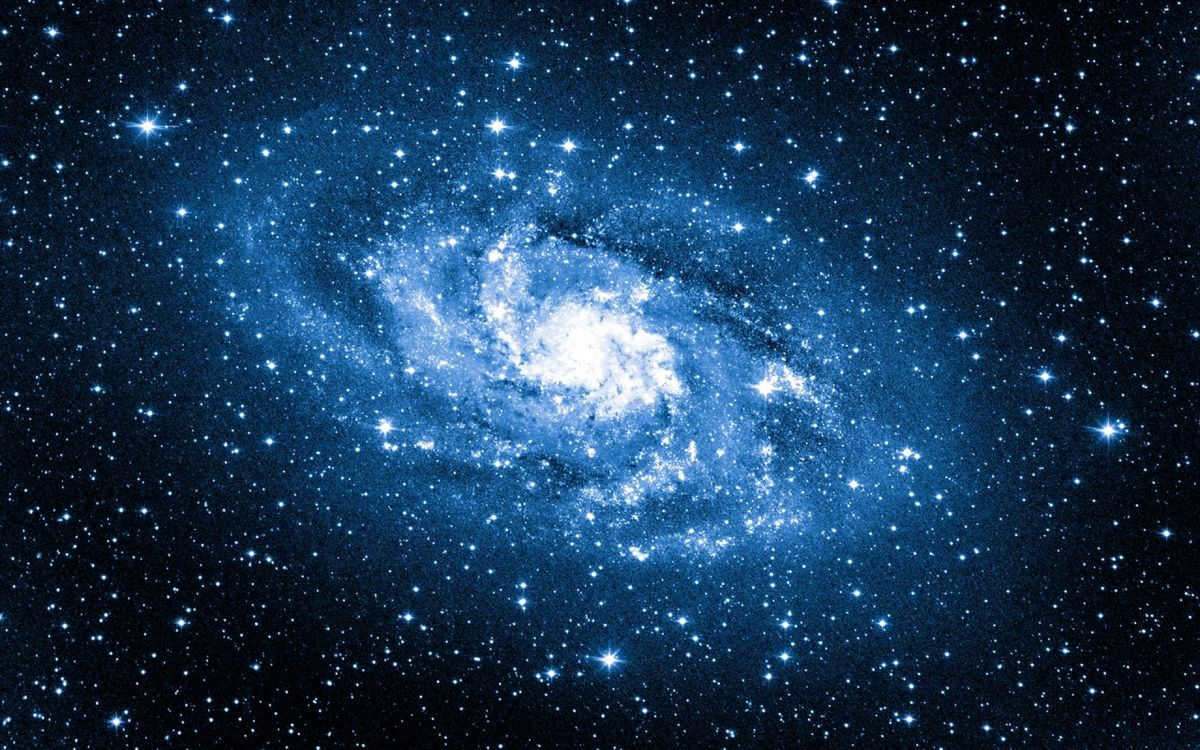
In 1979, cosmologist Alan Guth introduced the concept of inflation in order to provide an explanation for the absence of flatness in the original Big Bang theory.
Guth’s inflation theory explains the flatness of the universe, but it also creates a situation where the universe is unable to exit this state of inflation. If this were to be true, the universe would not undergo reheating, and the formation of stars and galaxies would not occur.
Andreas Albrecht and Paul Steinhardt addressed this specific issue in their “new inflation” theory. They proposed that the rapid expansion of the universe lasted only for a few seconds before coming to a halt. This theory demonstrated how the universe could undergo rapid inflation while still undergoing heating.
The theory of “eternal inflation”, also known as chaotic inflation theory, was first proposed by Andrew Linde, a professor at Stanford University. This theory builds upon previous research conducted by Steinhardt and Alexander Vilenkin.
According to this concept, the inflationary phase of the universe continues indefinitely, meaning that it does not represent the ultimate fate of the entire universe. In other words, cosmic inflation persists in certain regions of the universe while ceasing in others. As a result, this gives rise to a multiverse scenario in which space is divided into separate bubbles, akin to a universe within a universe.
Within this multiverse, different universes can operate under distinct laws of nature and physics. Thus, rather than having a single expanding cosmos, our own universe could be part of an inflationary multiverse consisting of numerous smaller universes, each possessing unique properties.
6. The Conformal Cyclic Model
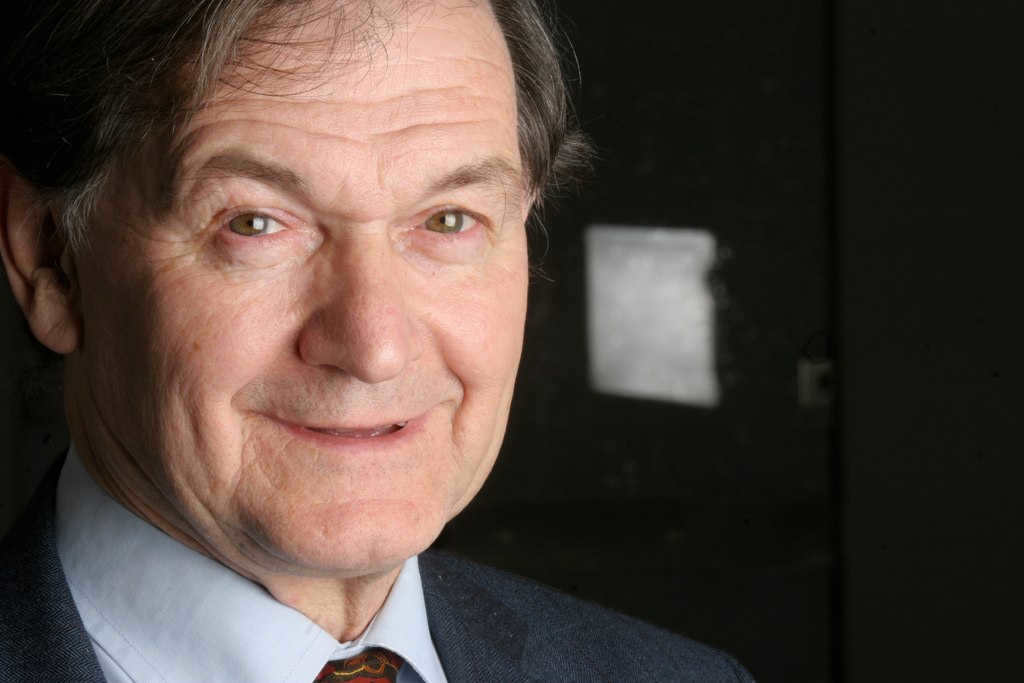
The theory of conformal cyclic cosmology (CCC) suggests that the universe undergoes a series of cycles, including the big bang and subsequent expansions. According to this model, the big bang is not the actual beginning of the universe, but rather a transition phase. The concept was developed by Roger Penrose, a renowned theoretical physicist and mathematician.
In his model, Penrose utilized multiple FLRW (Friedmann-Lemaître-Robertson-Walker) metric sequences as the foundation. He proposed that the conformal boundary of one FLRW sequence can be connected to the boundary of another.
The FLRW metric is considered the most accurate approximation of the universe’s nature and is a fundamental component of the Lambda-CDM model. Each sequence initiates with a big bang, followed by inflation and subsequent expansion.
The concept of a cyclic or oscillatory model, where the universe undergoes a perpetual cycle of repetition, first gained attention in the 1930s when Albert Einstein investigated the notion of a “timeless” universe. He hypothesized that once the Universe reached a specific threshold, it would initiate a collapse leading to a Big Crunch, only to rebound in a Big Bounce.
Currently, there exist four distinct iterations of the cyclic model, with one of them being conformal cyclic cosmology.
5. The illusion of a black hole in four dimensions
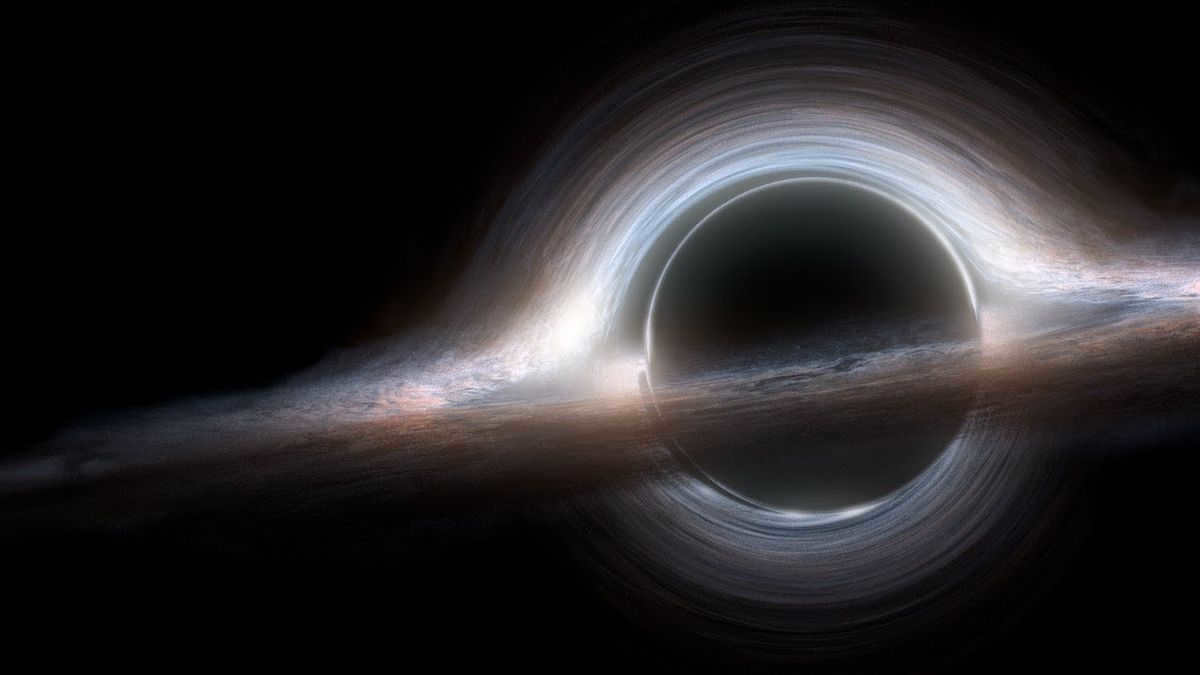
In 2013, a group of researchers conducted a study that proposed a unique origin for our universe. They suggested that it could have emerged from the remnants of a collapsed four-dimensional star or black hole.
The cosmologists involved in the study pointed out a limitation of the Big Bang theory, which is its inability to explain the temperature equilibrium observed in the universe.
While many scientists accept the inflationary theory as a satisfactory explanation for the rapid expansion of a small patch of uniform temperature into the vast universe we observe today, the team found this explanation implausible due to the chaotic nature of the Big Bang event.
When the team simulated the collapse of a star in four dimensions, they discovered that the expelled remains of the dying star would probably create a three-dimensional membrane surrounding a three-dimensional event horizon. It’s possible that our universe is one of these membranes.
The model of the cosmos as a “four-dimensional black hole” does explain why the temperature of the universe is nearly uniform. It could also provide valuable insights into the cause of cosmic inflation, which occurred a few seconds after the Big Bang. However, recent data from ESA’s Planck satellite has revealed slight variations in the temperature of the cosmic microwave background (CMB). These observations from the satellite differ from the proposed model by approximately four percent.
4. Theory of the Plasma Universe
The Plasma Universe theory, also known as the Electric Universe theory, proposes that plasma, a state of matter consisting of charged particles, plays a fundamental role in the structure and behavior of the universe. According to this theory, electromagnetic forces, rather than gravity, are the primary drivers of the universe’s evolution. This theory challenges the mainstream view that gravity is the dominant force shaping the cosmos.
In the Plasma Universe theory, galaxies, stars, and other celestial objects are formed and powered by electric currents flowing through vast cosmic plasma networks. These electric currents create magnetic fields and plasma filaments that connect galaxies and form cosmic webs. This interconnected network of plasma structures is thought to be responsible for the observed large-scale structure of the universe.
One of the key predictions of the Plasma Universe theory is the existence of “electric double layers,” which are thin regions of highly concentrated electric charge that separate regions of opposite charge. These electric double layers are believed to play a crucial role in the formation of stars and galaxies, as well as in the generation of cosmic rays and other energetic phenomena.
The Plasma Universe theory also offers explanations for various astronomical phenomena that are difficult to explain within the framework of the traditional gravitational model. For example, it suggests that the high-energy particles observed in the universe could be produced by electric discharges rather than by the gravitational collapse of massive objects.
While the Plasma Universe theory is still considered controversial and is not widely accepted by the scientific community, it continues to attract interest and research. Advocates of this theory argue that it provides a more comprehensive and coherent explanation for the observed properties of the universe, and that it has the potential to revolutionize our understanding of cosmology.

Our current comprehension of the cosmos is primarily shaped by the force of gravity, specifically Einstein’s General Theory of Relativity, which is employed by cosmologists to elucidate the essence of the universe. Interestingly enough, akin to most phenomena, scientists have been contemplating alternatives to gravity for numerous years.
Plasma cosmology (or plasma universe theory) posits that electromagnetic forces and plasma play a pivotal role in the cosmos rather than gravity. Although this approach encompasses various iterations, the fundamental concept remains unaltered; each celestial entity, including the Sun, stars, and galaxies, is the product of some electrical process.
The initial proposal for the plasma Universe came from Hannes Alfven, a Nobel Prize laureate, in the late 1960s. Later on, Swedish theoretical physicist Oskar Klein joined him to further develop the Alfvén – Klein model.
This model is constructed on the presumption that the universe contains equal amounts of matter and antimatter (though this is not supported by modern particle physics). The boundaries between these two regions are defined by cosmic electromagnetic fields. Consequently, the interaction between them would lead to the creation of a plasma, which Alfven referred to as “ambiplasma”.
Based on the theory, it is postulated that this plasma would give rise to expansive sectors of both matter and antimatter across the cosmos. Furthermore, it has been proposed that our present position in space should reside in a sector abundant in matter, thereby resolving the issue of matter-antimatter asymmetry.
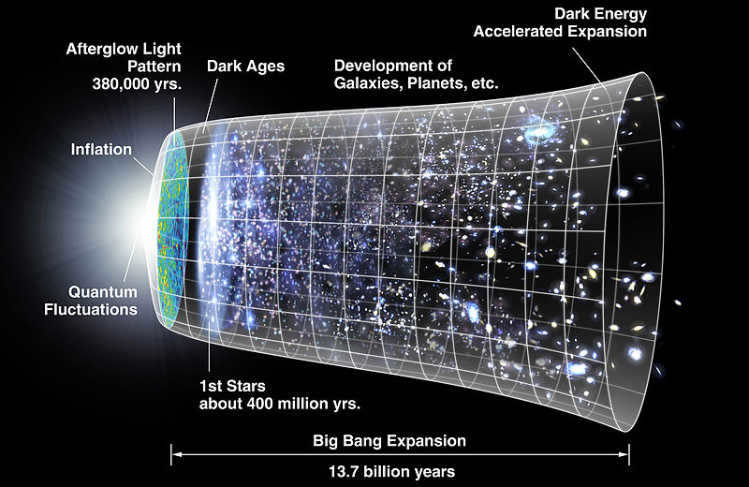
After years of mathematical modeling and extensive research, cosmologists have come to the logical conclusion that our universe originated from a singularity, an infinitesimally dense and hot point. The subsequent expansion of the cosmos allowed for the gradual cooling down, ultimately leading to the formation of galaxies, stars, and various other celestial bodies.
Nevertheless, it is worth noting that the standard Big Bang model is not the only theory in town, with one particularly intricate proposition put forward by Christoph Wetterich, a professor at Heidelberg University in Germany.
According to Wetterich’s hypothesis, our current universe may have actually started out as a frigid and sparsely populated realm that eventually emerged from an extended period of freezing. As time passed, the elementary particles within this early universe grew heavier, while the gravitational constant gradually declined.
Moreover, he elaborated that in the event that particle masses rise, the radiation emitted by the early Universe can create an illusion of increased heat and greater distance between celestial bodies, despite the actual conditions remaining unchanged.
The fundamental concept underpinning Wetterich’s Slow Freeze-Out cosmic model posits that the universe lacks a definite origin or ultimate fate. Instead of a fiery Big Bang, the theory proposes a frigid and gradually evolving cosmos. As per Wetterich, this theory accounts for the variations in density witnessed in the nascent universe (primary fluctuations) and the prevalence of dark energy in our present-day cosmos.
2- Hindu cosmology.
Religion and science have long been considered adversaries, dating back to the time of Copernicus and Galileo. It is often assumed that there is no room for science within the realm of religion, and vice versa. However, there is one particular religion whose cosmological beliefs align remarkably well with the modern understanding of the universe.
The theories of creation found within Hindu mythology are widely regarded as some of the oldest and most significant among all religious analogies. Over the years, esteemed physicists and cosmologists, such as Carl Sagan and Niels Bohr, have expressed admiration for Hindu cosmological beliefs due to their striking resemblance to the timelines presented in the standard cosmological model of the universe.
As per the beliefs of Hindu mythology, the cosmos operates on an unending cycle. This implies that our current cosmos will be succeeded by an infinite number of cosmoses. Each iteration of the cosmos is divided into two stages, known as “kalpa” (or Brahma’s day) and “pralaya” (Brahma’s night), with each phase lasting 4.32 billion years. According to Hindu mythology, the age of the cosmos (8.64 billion years) surpasses the estimated age of the solar system.
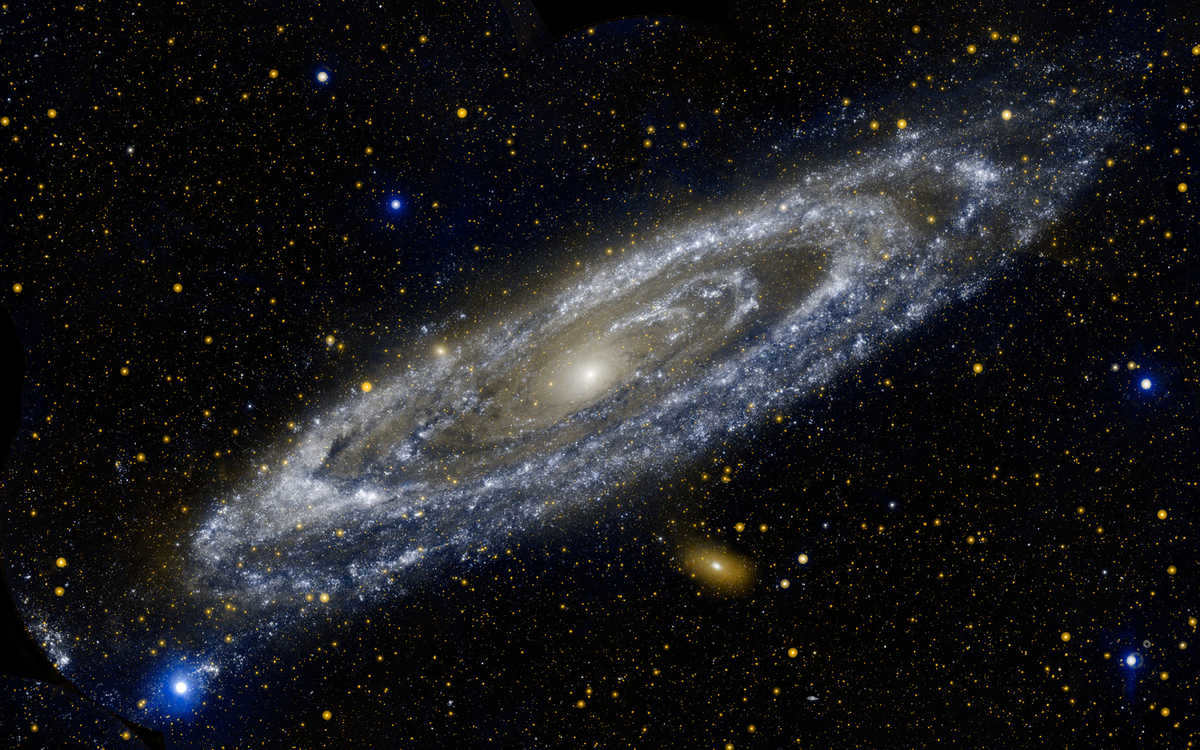
The theory of the stationary model posits that the observable universe remains unchanged in every location and at all points in time. In a perpetually expanding universe, matter is continuously generated to occupy empty space.
As per this model, galaxies and other large celestial bodies in close proximity to us should appear similar to those located far away. However, the Big Bang theory suggests that distant galaxies should appear younger than those nearby (when observed from Earth) because it takes a longer time for light to reach us.
The concept of a stationary state was initially proposed in 1948 by cosmologists Herman Bondi, Fred Hoyle, and Thomas Gold. It originated from the perfect cosmological principle, which asserts that the universe is uniform regardless of the viewing direction and will always remain so.
In the early and mid-twentieth century, the steady-state theory became widely popular. However, in the 1960s, it was mostly dismissed by the scientific community in favor of the Big Bang theory, following the discovery of the cosmic microwave background.
How did our universe come into existence? How did it transform into an apparently boundless expanse? And what will it evolve into in the distant future, spanning millions and billions of years? These inquiries have haunted (and continue to haunt) the intellects of philosophers and scientists, it appears, since time immemorial, giving birth to numerous intriguing and occasionally outlandish hypotheses. Presently, the majority of astronomers and cosmologists have reached a general consensus that the universe we are familiar with originated from a colossal explosion that not only generated the majority of matter but also served as the foundation for the fundamental physical laws governing the existence of the cosmos surrounding us. This entire concept is referred to as the Big Bang Theory.
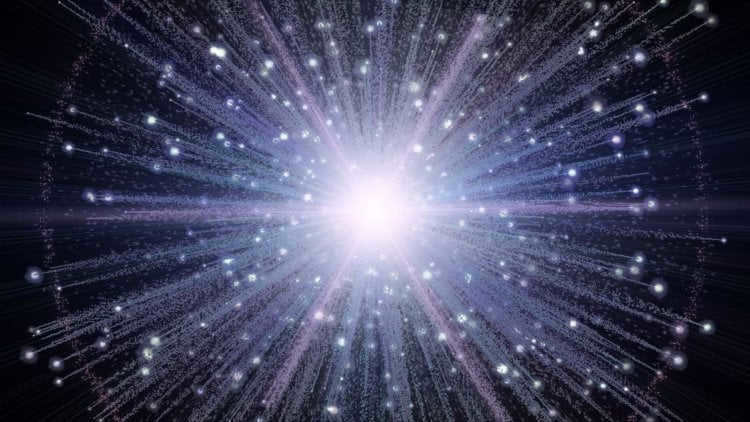
The fundamental principles of the Big Bang hypothesis are relatively straightforward. In essence, it posits that all matter that has ever existed in the Universe came into being simultaneously approximately 13.8 billion years ago. At that particular moment, all matter took the form of an exceedingly compact, abstract sphere (or point) with infinite density and temperature. This state is referred to as a singularity. Suddenly, the singularity initiated a process of expansion, ultimately giving rise to the familiar universe we inhabit.
Timeline of events in the Big Bang Theory
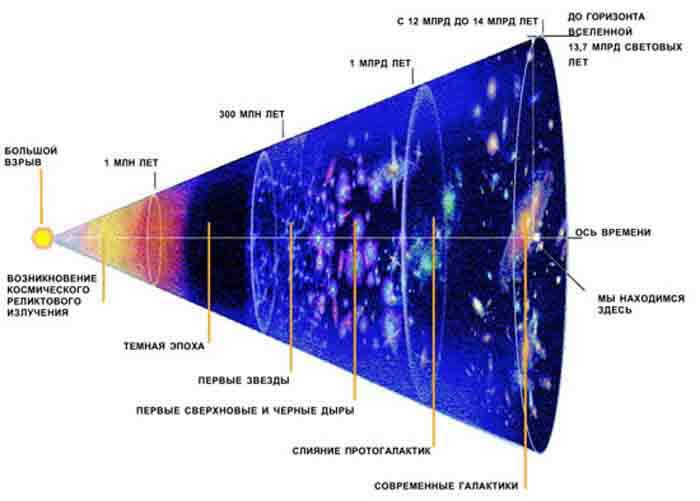
This is the appearance of the timeline.
Based on the knowledge of the present state of the universe, scientists suggest that the origin of everything can be traced back to a single point with infinite density and finite time which started expanding. According to the theory, after the initial expansion, the universe went through a cooling phase that allowed the emergence of subatomic particles and later simple atoms. Due to the force of gravity, massive clouds of these ancient elements eventually formed stars and galaxies.
According to scientific conjecture, the universe originated approximately 13.8 billion years ago, making this the established age of the universe. Through the exploration of different theoretical principles, experimentation with particle accelerator technology and high-energy states, as well as the study of distant regions of outer space, scientists have inferred and put forth a timeline of events that commenced with the Big Bang and ultimately resulted in the current state of cosmic evolution.
Scientists are engaged in ongoing debates and discussions about the earliest periods of the universe’s origin, spanning from 10^-43 to 10^-11 seconds after the Big Bang. This is a challenging topic to comprehend because the laws of physics as we currently understand them could not have been in effect during this time. Consequently, it is difficult to fathom how the processes in the early Universe were governed. Furthermore, experiments exploring the potential energies that may have been present during this period have yet to be conducted. Despite these challenges, numerous theories propose that the universe had a starting point from which all things originated.
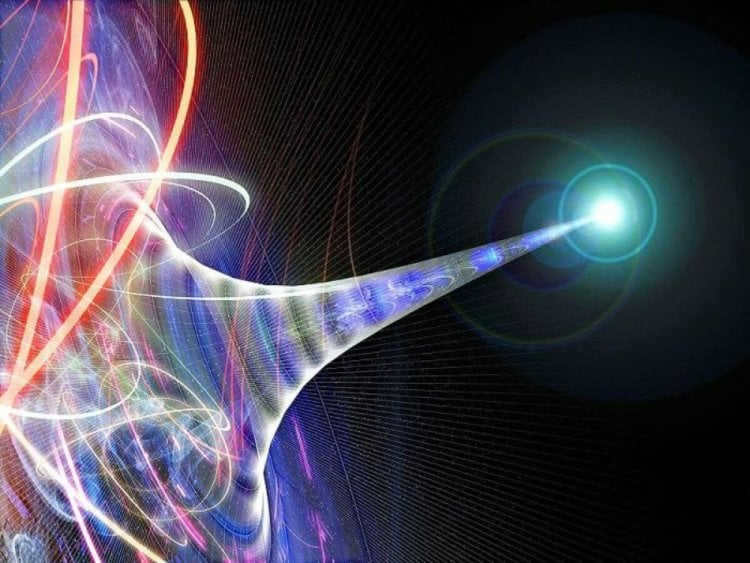
The concept of the singularity has limited human explanations.
Referred to as the Planck epoch (or Planck era), it is recognized as the earliest documented phase of the universe’s evolution. At this juncture, all matter existed within a singular point characterized by infinite density and temperature. During this interval, scientists hypothesize that gravitational interaction’s quantum effects prevailed over physical interaction, with no physical force matching the strength of gravity.
The Planck era supposedly endured from 0 to 10 -43 seconds and earned its name due to being measured solely in Planck time. Given the extreme temperatures and infinite density of matter, the Universe’s state was exceedingly precarious during this time frame. Subsequently, there were periods of expansion and cooling that resulted in the emergence of the fundamental forces of physics.
During the time frame of approximately 10.36 to 10.32 seconds following the occurrence of the Big Bang, the Universe’s temperature reached a sufficiently low level (1028 K). This resulted in the divergence of electromagnetic forces (strong interaction) and weak nuclear interactions (weak interaction).
The Era of Expansion
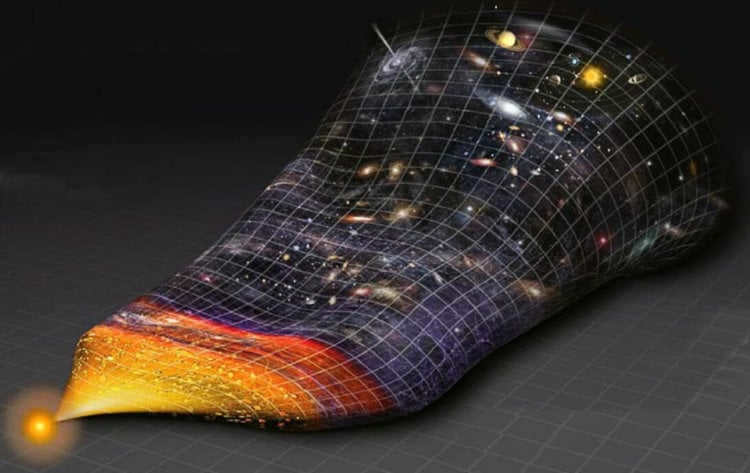
We can attempt to conceptualize the cosmos in this manner.
When the initial fundamental forces emerged in the cosmos, a phase of inflation commenced, lasting from 10 -32 seconds in Planck time until an indeterminate point in time. The majority of cosmological models propose that the cosmos was uniformly brimming with energy of high density during this span, and the immensely high temperatures and pressures prompted rapid expansion and cooling.
To ensure that you do not overlook any fascinating developments in the realm of cutting-edge technology, please subscribe to our news channel on Telegram. There, you will be privy to a wealth of new information.
This process started around 10 -37 seconds ago, when the phase of transition resulted in the separation of forces, followed by an exponential expansion of the Universe. Simultaneously, the Universe was undergoing baryogenesis, a period when the temperature was incredibly high, causing particles in space to move in a disordered manner at nearly the speed of light.
During this time, particle-antiparticle pairs were formed and immediately collided and collapsed, leading to the eventual dominance of matter over antimatter in the current Universe. Once inflation came to an end, the Universe consisted of quark-gluon plasma and other elementary particles. From this moment onward, the Universe began to cool down, allowing matter to form and combine.
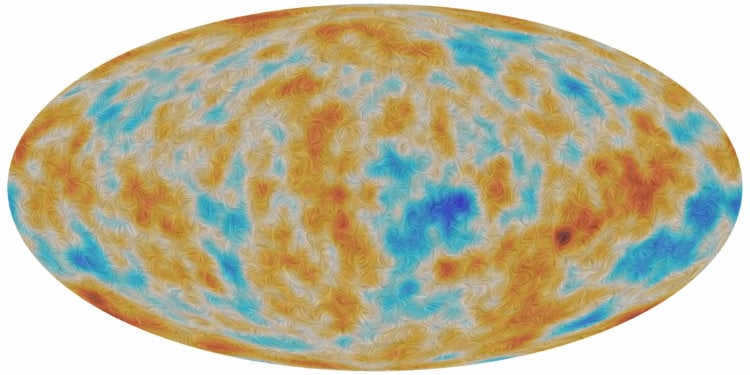
Following the explosion, a decrease in temperature was necessary.
As the universe underwent a decrease in density and temperature, the energy within each particle also diminished. This transitional phase persisted until the fundamental forces and elementary particles assumed their current forms. With particle energies now at levels attainable through experiments, the existence of this time period is far less contentious among scientists.
For instance, it is theorized that at 10 -11 seconds post-Big Bang, particle energy experienced a significant decline. Around 10 -6 seconds, quarks and gluons began to combine and form baryons, namely protons and neutrons. The prevalence of quarks over antiquarks subsequently resulted in the dominance of baryons over antibaryons.
As the temperature dropped below the threshold required to generate new proton-antiproton pairs (or neutron-antineutron pairs), a massive collapse of these particles ensued, resulting in the reduction of the original protons and neutrons by a factor of 1/1010 and the complete disappearance of their antiparticles. A similar phenomenon took place approximately 1 second after the occurrence of the Big Bang, but this time it involved only electrons and positrons. Following the massive destruction, the remaining protons, neutrons, and electrons ceased their chaotic motion, and the energy density of the Universe became dominated by photons and, to a lesser extent, neutrinos.
After approximately 379,000 years, hydrogen nuclei combined with electrons to create atoms (primarily hydrogen once again), while radiation separated from matter and continued to expand through space with little resistance. This radiation, known as relic radiation, is the oldest form of light in the cosmos.
As the universe expanded, relic radiation gradually decreased in density and energy. Currently, it has a temperature of 2.7260 ± 0.0013 K (-270.424 °C) and an energy density of 0.25 eV (or 4.005 × 10 -14 J/m³; 400-500 photons/cm³). Relict radiation extends in all directions for approximately 13.8 billion light-years, although estimates suggest its actual spread reaches about 46 billion light-years from the center of the Universe.
The organization of the cosmos
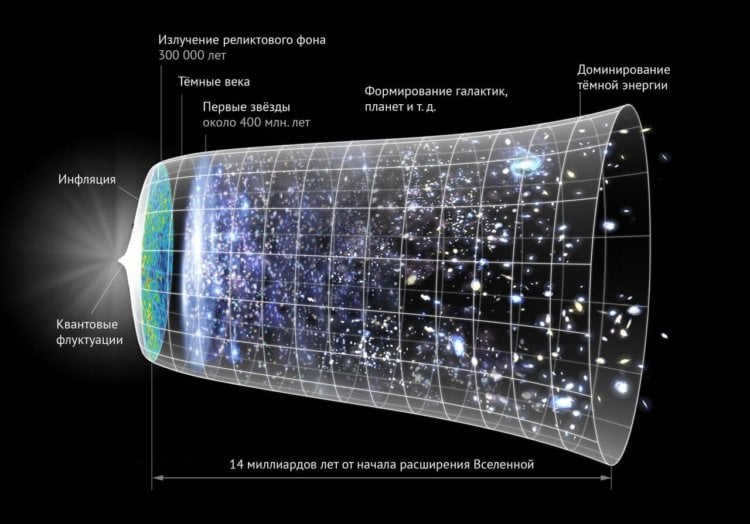
This is the timeline of events that occurred over a span of 14 billion years.
During the subsequent billions of years, regions of matter in the universe that were initially evenly distributed began to gravitate towards one another. This led to an increase in density and the formation of gas clouds, stars, galaxies, and other celestial structures that we can observe today. The term used to describe this period is the hierarchical epoch. It was during this time that the Universe as we know it started to take shape. Matter started to come together to form structures of varying sizes – stars, planets, galaxies, galactic clusters, and galactic superclusters, with intergalactic spaces in between that housed only a few galaxies.
The description of this process can be explained based on the concept of the quantity and composition of matter spread across the Universe, categorized as cold, warm, hot dark matter, and baryonic matter. Nevertheless, the current prevailing cosmological model of the Big Bang is the Lambda-CDM model, which posits that dark matter particles have velocities slower than the speed of light. This model was selected due to its ability to resolve the discrepancies observed in previous cosmological models.
What is the fate of the Universe?
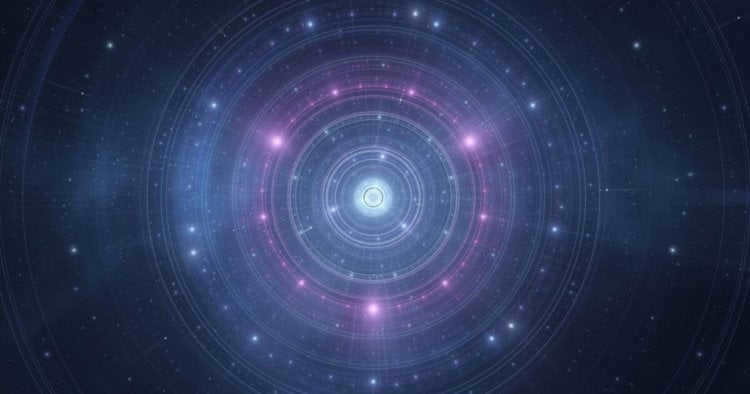
The future is unknowable, but it is possible to make predictions about it.
When scientists consider the idea that the universe started from a tiny point of infinite density and then began to expand, they naturally wonder what the ultimate fate of the universe might be. Will it continue expanding forever, or will it eventually run out of energy and begin to contract, eventually returning to a state of infinite density?
Since the inception of the cosmological debate, cosmologists have been tirelessly seeking answers to these questions: what is the correct cosmological model of the universe and how did it evolve? The discovery of dark energy in the 1990s, coupled with the acceptance of the Big Bang theory, has led scientists to narrow down the two most plausible scenarios.
The first scenario, known as the big bang, postulates that the Universe will eventually reach its maximum size and then start to collapse. However, this outcome can only occur if the mass density of the Universe surpasses the critical density. In simpler terms, if the density of matter exceeds a specific value (1-3×10 -26 kg of matter per m³), the Universe will begin to shrink.
The concept of the Big Bang can be likened to this
There is another scenario, known as the “heat death of the universe,” which suggests that if the density in the universe is at or below the critical density, its expansion will gradually slow down but never come to a complete halt. In this scenario, the expansion will continue until the interstellar gas within each galaxy is no longer consumed by star formation. Consequently, there will be a complete cessation of the transfer of energy and matter between objects. In this case, all existing stars will eventually exhaust their fuel and transform into white dwarfs, neutron stars, and black holes.
Over time, black holes will collide with other black holes, resulting in the creation of increasingly larger ones. The temperature of the Universe will gradually approach absolute zero. Ultimately, black holes will “evaporate” and emit their final Hawking radiation. Eventually, the thermodynamic entropy in the Universe will reach its maximum. This will result in the heat death of the Universe.
Join our exclusive Telegram chat where you can always find someone to discuss the latest news in the world of advanced technology.
When considering the existence of dark energy and its influence on the expansion of space, modern observations have led scientists to conclude that over time, an increasing portion of the universe will surpass our event horizon and become imperceptible to us. The final outcome of this phenomenon remains unknown to scientists, but it is possible that “heat death” could serve as the ultimate conclusion.
There exist alternative hypotheses regarding the distribution of dark energy, specifically the various types it may take (e.g., phantom energy). These hypotheses propose that as a result of infinite expansion, galactic clusters, stars, planets, atoms, atomic nuclei, and matter itself will be torn apart. This evolutionary scenario is commonly referred to as the “big bang”. In this scenario, the expansion itself becomes the cause of the Universe’s demise.

Can you share all of this information on the BBC?
The earliest mention of the Big Bang can be traced back to the early 20th century and is associated with space observations. In 1912, American astronomer Vesto Slifer conducted a series of observations on spiral galaxies, initially believed to be nebulae, and measured their Doppler redshift. In nearly all cases, the observations indicated that the spiral galaxies were moving away from our Milky Way.
In 1922, the renowned Russian mathematician and cosmologist Alexander Friedman deduced the Friedman equations from Einstein’s equations for the general theory of relativity. Despite Einstein’s advocacy for a theory supporting the existence of a cosmological constant, Friedmann’s work demonstrated that the Universe was actually in a state of expansion.
In 1924, Edwin Hubble made a groundbreaking discovery when he measured the distance to the nearest spiral nebula and realized that these systems were actually other galaxies. During this time, Hubble also started developing a set of metrics to calculate distances using the 2.5-meter Hooker telescope at Mount Wilson Observatory. By 1929, Hubble had established a correlation between distance and the rate at which galaxies were moving away, which later became known as Hubble’s Law.
In 1927, Georges Lemaître, a Belgian mathematician, physicist, and Catholic priest, independently arrived at the same conclusions as Friedmann’s equations. He was the first to formulate the relationship between the distance and velocity of galaxies, providing an initial estimate of the coefficient for this relationship. Lemaître proposed that at some point in the past, all the mass of the universe was concentrated in a single point, similar to an atom.
During the 1920s and 1930s, these findings and hypotheses sparked extensive discussions among physicists. The prevailing belief at the time was that the universe remained fixed and unchanging. According to the existing model, as the Universe expanded infinitely, new matter was continuously generated and distributed evenly throughout its entirety. Many scientists who supported this viewpoint saw the Big Bang theory as more of a religious concept than a scientific one. Lemaître faced criticism for what some perceived as a religious bias.
It is worth mentioning that there were other theories present during the same period. For instance, Milne’s universe model and the cyclic model, both of which were based on Einstein’s general theory of relativity and later endorsed by the scientist himself. According to these models, the Universe exists in an unending sequence of repeating cycles involving expansion and collapse.
Following World War II, a heated controversy emerged between supporters of the static universe model (originally proposed by astronomer and physicist Fred Hoyle) and proponents of the Big Bang theory, which was rapidly gaining popularity within the scientific community. Ironically, it was Hoyle who coined the term “big bang,” which subsequently became the name for the new theory. This occurred in March 1949 during a broadcast on the British BBC radio.
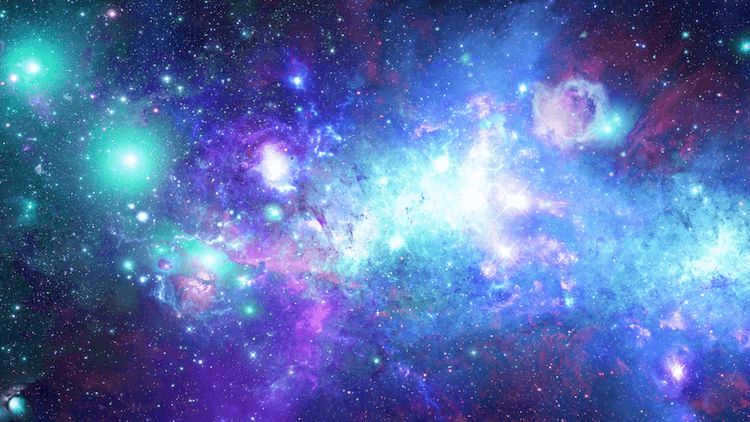

The cosmos is so enigmatic that comprehending even a fraction of it is beyond our reach.
Over time, further scientific investigations and observations increasingly supported the Big Bang theory and cast doubt on the model of a stationary universe. The discovery and confirmation of relic radiation in 1965 ultimately cemented the Big Bang as the most plausible explanation for the origin and evolution of the Universe. From the late 1960s to the 1990s, astronomers and cosmologists conducted extensive research on the Big Bang, finding resolutions to many of the theoretical obstacles that obstructed this theory.
You can discover the most recent updates in the realm of cutting-edge technology on Google News.
One of such solutions is the groundbreaking research conducted by Stephen Hawking and other physicists, who successfully demonstrated that the singularity was indeed the indisputable initial state of general relativity and the Big Bang cosmological model. In 1981, physicist Alan Guth developed a groundbreaking theory that explains the period of rapid cosmic expansion, also known as the epoch of inflation. This theory effectively addressed numerous previously unanswered theoretical questions and dilemmas.
In the 1990s, there was a surge of curiosity surrounding dark energy, as it was believed to hold the answers to numerous unresolved issues in cosmology. Alongside the quest to understand why the Universe was experiencing a loss of mass together with dark matter (a hypothesis initially suggested by Jan Oort in 1932), there was also a pressing need to comprehend the ongoing acceleration of the Universe.
Advancements in the field of research have been greatly facilitated by the introduction of more sophisticated telescopes, satellites, and computer models. These technological breakthroughs have enabled astronomers and cosmologists to delve deeper into the mysteries of the Universe and gain a more accurate understanding of its actual age. The utilization of space telescopes, such as the Cosmic Background Explorer (COBE), the Hubble Space Telescope, the Wilkinson Microwave Anisotropy Probe (WMAP), and the Planck Space Observatory, has also played a pivotal role in advancing our knowledge of this subject.
Nowadays, thanks to the Hubble telescope, we have the capability to observe more than 100 billion galaxies, and it is highly likely that each of them contains hundreds of billions of stars. However, what is the origin of this vast expanse? Why does something exist instead of nothing? This inquiry forms the foundation of numerous religious beliefs. It appears reasonable to assume that such an immense universe must have been brought into existence by a higher power, as it is difficult to comprehend its existence arising out of nothingness. Nonetheless, I am here to explain why this supposition is incorrect, and how the laws of physics alone can account for the emergence of these galaxies and stars.
In 1926, Edwin Hubble made a remarkable discovery that shattered the belief that our galaxy was the only one in the universe. Just three years later, he made another groundbreaking realization – other galaxies were actually moving away from us. This revelation immediately challenged the notion that we were at the center of the Universe. Hubble’s observations painted a different picture – the Universe is expanding, regardless of the galaxy one observes it from.
Before 1929, the scientific community believed that the Universe was static and eternal. However, now that we know it is in motion, we can delve into its past and uncover its mysteries. All galaxies share a common origin: approximately 13.8 billion years ago, they were all condensed into a single point, which we now refer to as the Big Bang. But what lies ahead for these galaxies? Will the expansion continue indefinitely? These are the questions that initially sparked my interest in cosmology and led me to pursue a career in physics.
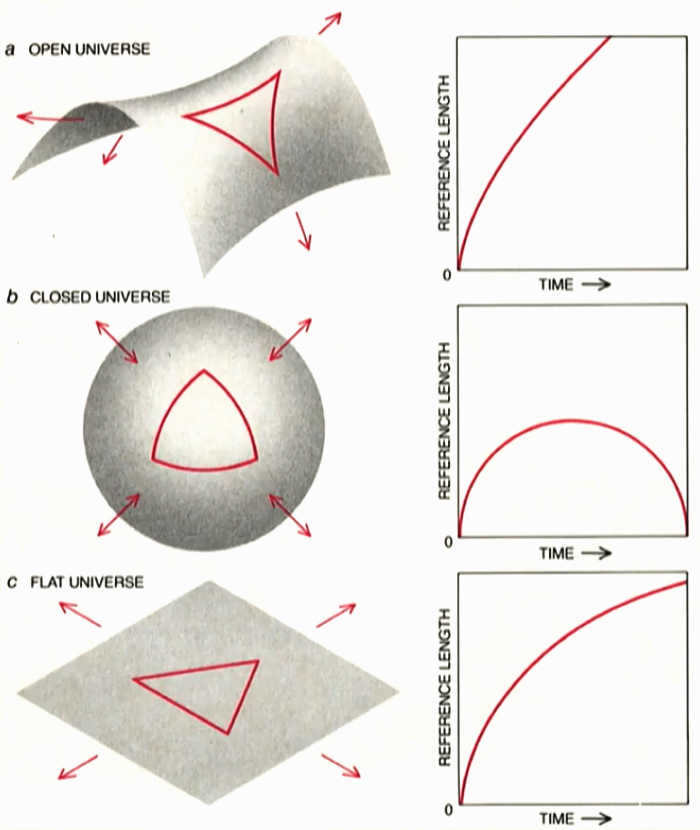
As per the theory of relativity, the closed universe is expected to undergo expansion, followed by contraction and eventual collapse. On the other hand, the open universe is expected to expand indefinitely, while the flat universe will experience initial expansion before gradually slowing down and coming to a halt. The crucial question is: How can we determine the type of universe we inhabit and, in turn, discern our future?
Dark matter
The structure of the cosmos is connected to the concentration of its substance: if it surpasses a specific threshold (5.5 hydrogen atoms per cubic meter. – T&P), the universe is considered closed; if it is lower, then it is open, and if the two values are equivalent, then it is flat. Likewise, if Ω – the ratio of the universe’s density to the critical density – exceeds one, the universe is classified as closed; if it is below, then it is open, and if they are equal, then it is flat.
In 1936, a paper titled “Lens-like action of a star in deflecting light in a gravitational field” was published by Albert Einstein in the journal Science (T&P). In this paper, Einstein discussed the curvature of space due to gravity and the presence of heavy objects like stars. He explained that light passing behind a star can be deflected and bypass interfering objects, suggesting that space can act as a lens. Interestingly, Einstein had actually arrived at these conclusions in 1914 but had forgotten about them, deeming them unimportant at the time. However, the phenomenon of gravitational lensing is undeniably significant.
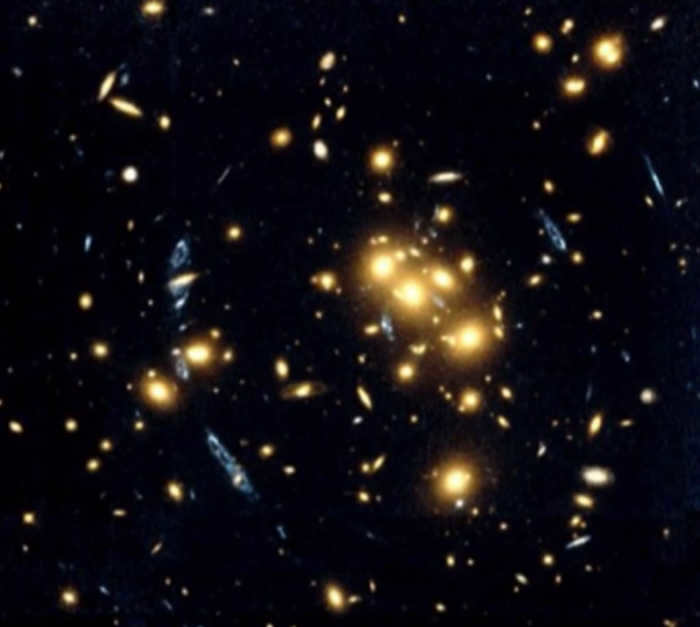
Thanks to Einstein’s theory, the picture shown above reveals not just separate galaxies and their clusters, but also multiple representations of the same galaxy. The light emitted by this galaxy had to pass through another galaxy, encountering a gravitational lens which caused its distortion.
In the late 1990s, scientists successfully tackled a challenging problem known as mathematical inversion to determine the mass of the galaxy responsible for causing such significant light distortion. Through this process, they created a mass distribution diagram that featured labeled peaks corresponding to galaxies. Interestingly, the diagram also revealed peaks in areas where no galaxies were visible. This peculiar phenomenon indicated the presence of invisible matter, known as dark matter, which is 40 times more abundant than visible matter. Dark matter, unlike visible matter, lacks luminosity and remains undetectable. Surprisingly, galaxies contain a much larger amount of dark matter than actual visible matter.
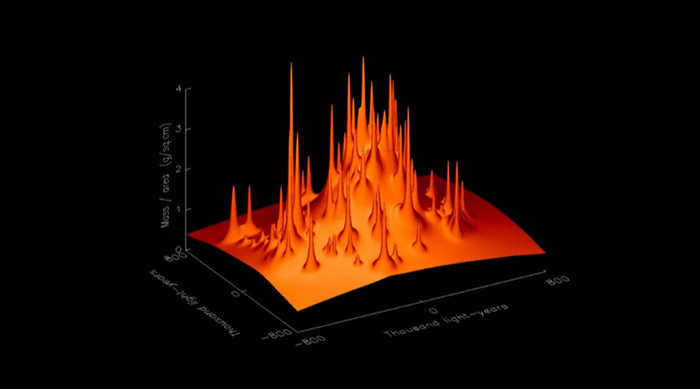
Examining the illustration depicted above, we can derive the cumulative weight, the weight of observable galaxies, and the weight of undetectable matter. Nevertheless, the entirety of the weights ascertained by experts only accounts for 30% of the weight necessary for the Universe to possess a planar configuration. This implies that our Universe is seemingly unbounded and will continue to expand perpetually. However, there exists a caveat: these calculations exclusively pertain to galaxies and their assemblages. As for what exists in the interstellar voids, we are unable to determine its weight. Consequently, we necessitate an alternative entity for gauging purposes.
As we observe the vast expanse of the Universe, the further we gaze, the deeper into the past we peer. It is intriguing to ponder if we can catch a glimpse of the momentous Big Bang that birthed it all, but alas, there exists a formidable barrier separating us from this event. During the nascent stages, the Universe was intensely hot and densely packed, preventing light from escaping its grasp. However, as time progressed, the Universe gradually cooled, reaching a critical juncture when it became electrically neutral and transparent after approximately 379,000 years (at this point, electrons and protons united to form hydrogen and helium atoms – T&P). This pivotal moment serves as our earliest window into the past, offering a glimpse into the Universe’s primordial state. The image below showcases this ancient epoch, presented in the Mohlweide projection, a commonly used cartographic technique:
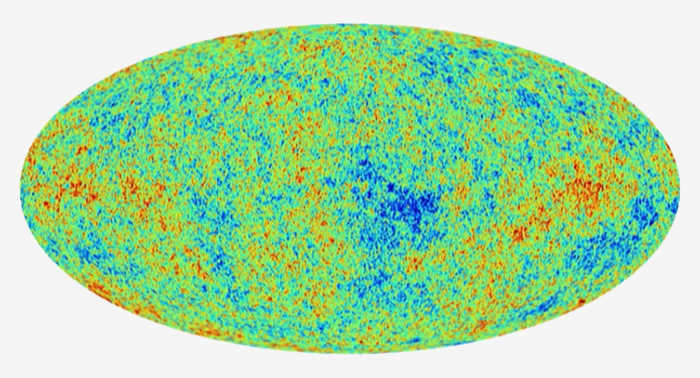
The relic radiation detected by Earth’s detectors originates from the hypothetical surface of the last scattering event, which can be visualized as a sphere encompassing us at an extremely distant distance. On this surface, regions of higher temperature can be observed, representing the locations of matter clusters approximately 379,000 years ago. The maximum possible size of these clusters, determined by the speed of gravity (equivalent to the speed of light), is estimated to be 100 million light years. By comparing these measurements with our observations, we can deduce the nature of our Universe: in a closed Universe, the clusters would appear smaller due to the curvature of space; in an open Universe, they would appear larger; and in a flat Universe, where there is no curvature, the clusters would appear to be their actual size of 100 million light years.
Data collected during the BOOMERanG experiment (Balloon Observations Of Millimetric Extragalactic Radiation and Geophysics – “Balloon Observations Of Millimetric Extragalactic Radiation and Geophysics”. By utilizing balloons, the radio telescope was elevated to an altitude of 42 thousand meters, enabling it to capture relic radiation without any loss, as opposed to being absorbed by microwaves within the atmosphere. – T&P) supports the calculations and indicates the absence of spatial distortion. Our existence is within a flat Universe with a 99% likelihood.
Nevertheless, there exists a contradiction: in a flat Universe, as previously mentioned, we observe a dearth of matter – only 30% of the necessary mass. Where might the remaining 70% reside?
The power of vacant space
In the absence of matter, in the void. It may seem absurd, but vacant space is not as empty as it seems. This is what occurs within the proton: a constant bubbling, where various particles materialize and dematerialize:
We are unable to visually perceive them due to their fleeting existence, yet they constitute the majority of the proton’s mass. Consequently, it is plausible that they manifest in empty space and emit some form of energy. Perhaps the vacuum possesses weight as well?
During my time at university, there was a prevailing belief that the energy of the vacuum equated to a unit with 120 zeros. However, this assumption simply cannot be true, as it would result in a completely different universe where we would not exist. We eagerly anticipated a mathematical breakthrough that would enable us to diminish this colossal number. At one point, we even entertained the notion that empty space possessed zero energy. Eventually, we reached a consensus to not solely rely on theoretical concepts and instead sought a way to measure the energy of empty space. But how would we accomplish this?
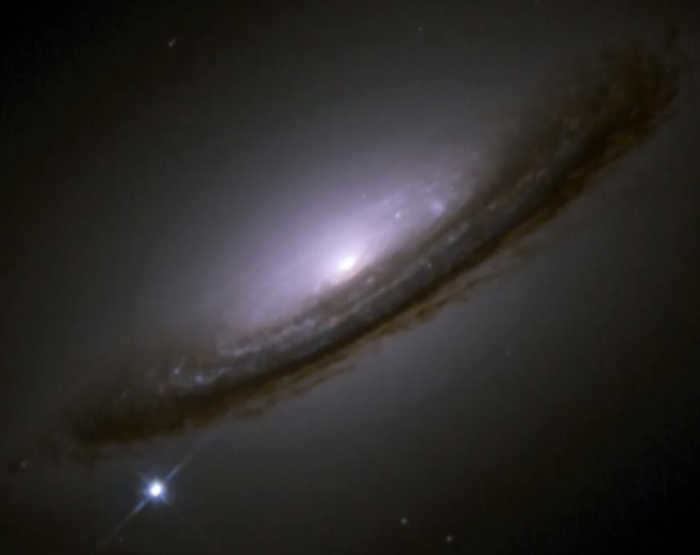
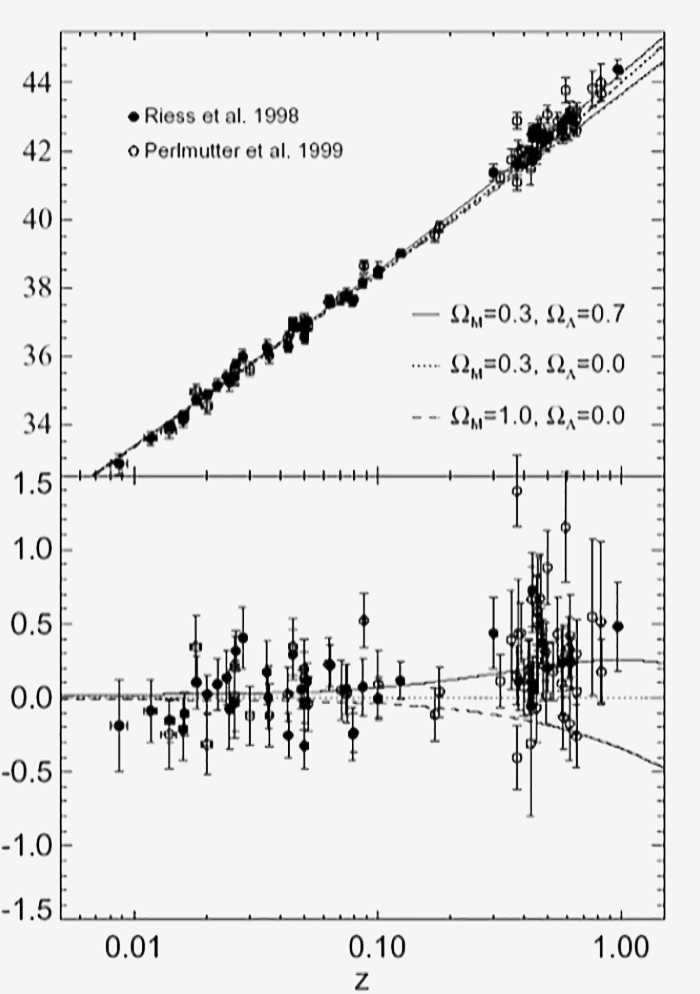
If the expansion rate of the universe remained constant, there would simply be a linear trajectory at the lowermost part. Astronomers initially anticipated that all supernovae would fall on or below this trajectory. However, a majority of these stars ended up positioned above the trajectory, implying that the expansion rate of the Universe was actually increasing.
Moreover, in order for the Universe to expand, an equal amount of energy is required as what we lacked – precisely 70%. This explanation aligns perfectly. In 2011, the Nobel Prize in Physics was bestowed upon the scientists who uncovered the fact that the
universe is expanding at an accelerating rate, and most of its mass is composed of empty space. Yet, we remain perplexed as to how this is even possible.
Perhaps it relates to the inherent characteristics of space and time and the origins of the universe. However, it is now evident that its destiny will be dictated not by matter or even geometry, but by the energy present in empty space.
A great fuss over nothing
What would be the outcome if a coin was flipped? Most probably, it would land on the ground, but if it was flipped with enough force, it would soar through the air and never return. The energy of a flipped coin is comprised of two components: “positive” kinetic energy T = mv²/2 (where m represents the mass of the coin and v is its velocity. – Note T&P) and the “negative” gravitational attraction force U = -GMm/R (where G denotes the gravitational constant, M is the mass of the Earth, and R is the distance between the centers of mass of the Earth and the coin. – Note T&P). Ultimately, it all boils down to a form of accounting: if the second value outweighs the first, the coin will descend to the ground; if the opposite is true, it will take flight. And if we can perform similar calculations for a coin, then we can apply them to the entire universe.
This depiction represents the birth of the universe:
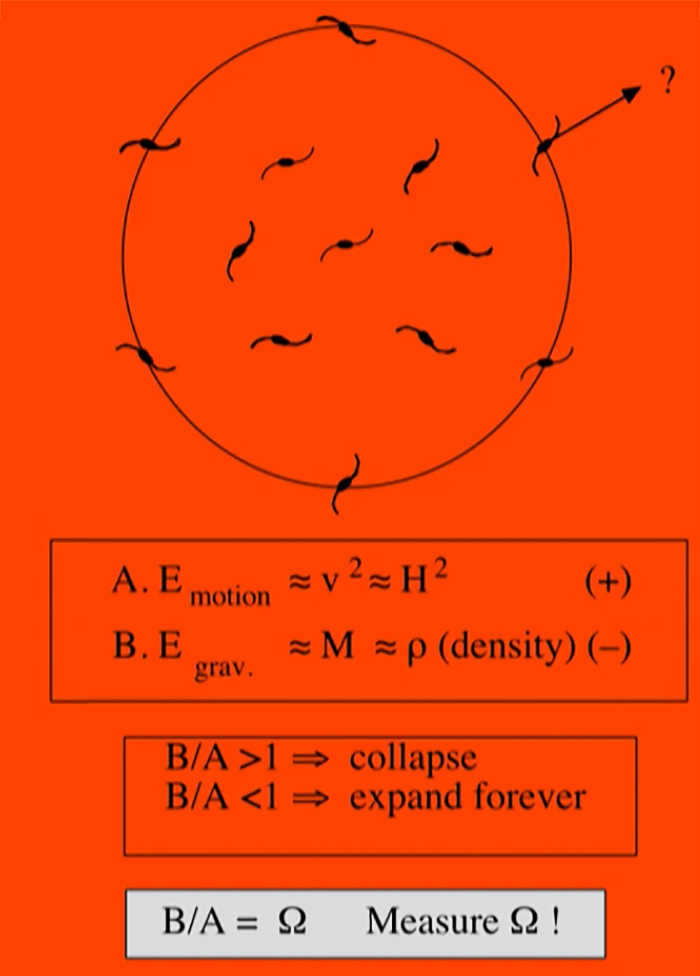
The same process is occurring with all galaxies, so in order to predict their fate, we only need to predict the future of one galaxy – for instance, the galaxy indicated by a question mark. Similar to a coin, the motion of the galaxy is determined by the interplay of kinetic energy and gravitational attraction. If the kinetic energy surpasses the gravitational attraction, the universe will continue expanding indefinitely; if the gravitational attraction is stronger, the universe will eventually collapse.
It has been discovered that the proportion between these two measures is the exact Ω that was referenced earlier (the proportion between the density of the Universe and the critical density). It is already understood that we exist within a flat Universe, meaning Ω = 1. Consequently, the force behind a galaxy’s outward movement from the Universe’s center is equal to the force pulling it back – and this principle applies to every single galaxy within the Universe. Thus, their combined force is zero – this is the result when the Universe is formed from nothing.
Emerging and Not Disappearing
We have already discovered that the apparent emptiness in the Universe is not truly empty: something is constantly bubbling within it, with virtual particles emerging and disappearing. However, where did this nothingness, from which these particles arise, come from? It turns out that through the combined effects of quantum mechanics and gravitation, not only do particles appear in space, but space itself can also emerge.
The universe has the ability to simply appear.
Previously, we determined that only a Universe with a total energy of zero can spontaneously emerge from nothingness, and this would result in a closed Universe. However, we also established earlier that our Universe is flat, which presents a contradiction.
But how can we provide evidence that inflation has actually occurred?
In 1916, Einstein theorized that as we move through space, we generate gravitational waves, which are essentially ripples in the fabric of spacetime. These waves are created even by the simplest of movements, such as waving a hand, and they propagate at the speed of light. However, these ripples are incredibly subtle and usually go unnoticed. In order to detect them, special detectors are used at observatories like the LIGO laser-interferometer gravitational-wave observatories located in Washington and Louisiana. These detectors were able to successfully pick up gravitational waves for the first time in September 2015, during the merger of two black holes. This groundbreaking discovery led to the awarding of the Nobel Prize in Physics in 2017.
However, this implies that inflation must have also given rise to gravitational waves, and if these waves are discovered, it will validate the inflationary model (scientists are currently searching for them through a series of experiments known as BICEP2 – Note T&P). This discovery would indicate that our Universe may have truly emerged from nothing.
If our Universe is indeed expanding at an accelerating rate, the objects we currently observe will eventually be significantly distant from us.
The hundreds of billions of galaxies we currently observe will be receding from us at speeds exceeding that of light, leaving us isolated in a vast, dark expanse. In the beginning, there was nothing, and in the end, there will be nothing.
We have not yet proven this to be true, but it is highly likely. And I appreciate that likelihood: every time we can eliminate the need for divine intervention and explain everything in terms of physics, we make progress. In addition to our own universe, there may be others that exist or are currently being formed where different laws apply. We humans are an incredibly insignificant part of the universe, we are mere noise, pollution in the background. If you are not pleased with this, perhaps you will find solace in Einstein’s statement:
“The most beautiful emotion we can experience is the sensation of the mysterious. It is the fundamental emotion that lies at the cradle of true art and true science.”
The universe was not created for us, it was simply created. The universe does not care about us. It is up to us to give meaning and significance to our lives.
Queries and Replies
– I have an inquiry regarding inflation. You mentioned that it was anticipated by particle physicists. What is the connection between inflation of space and particle physics?
– According to particle physics, the early universe experienced a transition from one phase state to another. During this phase transition, an enormous amount of energy is released, which resulted in inflation.
– Let’s say dark matter turns out to be a particle after all and we are able to discover it. Wouldn’t that mean that the foundation upon which all modern physics is based is false?
– The limits of a closed universe are clear, but the boundaries of the flat universe we inhabit are still unclear to me.
– A closed universe does not have any boundaries. Imagine a balloon with some dots drawn on it, and then inflate it. The universe is like the surface of that balloon: it expands without boundaries, causing the distance between the dots to gradually increase.
– While reading Richard Dawkins’ books, a question arose in my mind. Our brains are evolutionarily designed to solve everyday problems rather than comprehend the Universe. Do you have any concerns that science may eventually encounter the limits of our brain’s capabilities?
– It is possible that I may be. However, I have no fear. I am not afraid of existing in a universe that lacks purpose. While there may be limitations to the human brain, we will never know for certain unless we make an attempt. That is why it is crucial to continue trying. As far as I can tell, we have not yet encountered a barrier. Although you may face challenges, your descendants will be able to overcome them. We are constantly progressing, always pushing the limits. This is the essence of science, pushing boundaries.
Perhaps this is unrelated, but one reason I am involved in quantum computers and artificial intelligence is the potential for them to explain the inexplicable to us. Many people find artificial intelligence intimidating, but I believe it has the potential to surpass us as physicists.
– How do you envision the role of artificial intelligence in your industry?
– I don’t have a definite answer to that question. I can’t make predictions that go beyond 2 trillion years. The future of artificial intelligence is in our hands. We need to contemplate the possibilities and be prepared for them. One possibility is that it could render us obsolete in our work. However, we might have the opportunity to attend scientific conferences and indulge in endless music. I am pessimistic about this scenario because, to be honest, I don’t have much faith in humanity. But time will tell. We can still equip ourselves for whatever comes.
– Can we provide evidence that our existence is a simulated reality?
– Many people wonder about this question, and the answer is most likely negative.
Firstly, it should be acknowledged that a computer model is never flawless. There exist defective pixels where the rules of nature do not apply. However, these imperfections are not visible to us. It is possible that such pixels exist within the mind of President Trump, but in most other cases, they are non-existent. Everything functions in accordance with the laws of nature.
Secondly, when discussing the notion of being within a simulation, we must pose the question: what or who is responsible for our creation? Is it our creators? The concept that our existence is a computer simulation is merely an alternate version of the inquiry into the origin of the universe.
Nevertheless, as a physicist, the question of whether I am in a simulation or not is of no consequence to me – my curiosity lies in the laws by which it was constructed.
If one wishes to substantiate the claim that our world is a simulation, one must search for glitches in the program. Perhaps these defects will emerge in the future, but not yet.
– The universe is continuously expanding. Countless celestial entities are moving away from us at an accelerating pace. Does this imply that our likelihood of encountering other civilizations in this vast universe is diminishing?
– Firstly, we still have a staggering 2 trillion years before other galaxies become completely invisible – giving us ample time to potentially discover an extraterrestrial civilization. Secondly, even after 2 trillion years, our own Galaxy will still remain intact since galaxies themselves do not partake in the expansion.
– If everything originated from nothing, how did this nothingness decide to initiate the Big Bang 13 billion years ago? And why isn’t the Big Bang occurring in the present?
– The answer to the first question is that I am unsure. This is precisely why I engage in scientific pursuits.
Regarding the second question, it is possible that Big Bangs are currently occurring in other dimensions. There could potentially be a separate space right in front of you, but it would quickly become disconnected from our universe. In a multiverse, Big Bangs can occur frequently, leading to the emergence and collapse of multiple universes.
– Does what you have explained contradict the law of conservation of energy?
– Honestly, it does not. If we examine the countless stars and galaxies in the universe, there is an immense amount of energy present. However, when we factor in gravitational attraction, the overall energy of our entire universe, including all matter, balances out to zero. Therefore, energy is conserved. Quite fascinating, wouldn’t you agree?
– Is it feasible to construct a model of such a universe where the laws of physics would be impossible in our universe?
The act of searching holds more significance than the reality itself. Our existence resembles the mythical tale of Sisyphus, where we are left with no alternative. We can succumb to despair, or we can derive pleasure from the act of searching.
– If distinct universes are governed by different laws of physics, is there a superior set of laws that governs these diverse laws?
– Are there meta-laws in place? Perhaps. It is conceivable. Theories such as string theory suggest the possibility. However, there is currently no evidence to support this notion. It is possible that mathematical laws are at play. I am uncertain of what to anticipate. Nevertheless, this does not prove the existence of any deity.
– In your country, politicians face the risk of losing popularity if they openly acknowledge being atheists. Conversely, in our country, a majority of 70-80% of the population identifies as religious and may not be familiar with or interested in learning about the Big Bang Theory. What measures do you believe need to occur in order to shift the global balance of power?
– To be honest, I am indifferent to people’s religious beliefs. When I encounter individuals who believe that the world is only 5 or 6 thousand years old, I do not perceive them as unintelligent. Rather, I believe they simply lack knowledge on the subject. While it may be too late for older generations to change their perspectives, I hold hope for the younger generation. I desire for young people to engage in critical thinking rather than solely relying on emotions. Moreover, the issue does not solely revolve around facts, as one can easily access a multitude of facts on their smartphones – although these facts may be incorrect. The essential aspect is to instill in individuals the ability to ask questions and discern between truth and falsehood. In my opinion, incorporating science education into school curricula can foster this skill among young people.
– When I was in school, my physics teacher used to tell me that it was pointless to ask what happened before the Big Bang because the laws of physics don’t apply at the singularity point. He even said that if I were to ask that question, everyone would laugh. However, in your lecture, you spent the entire time discussing it. So, I have a question: Is human cognition limited in any way?
– That’s a great question, but I’m afraid you won’t be pleased with the answer. There is no “before” because time itself came into existence during the Big Bang. It’s incredibly difficult to comprehend. However, the question “What was there before the Big Bang?” may simply be meaningless. It’s possible that our consciousness lacks the capacity to understand and respond to that question.
However, I encourage you to continue asking questions and being in awe of the vastness of the universe. It’s okay if you don’t fully comprehend everything. Instead, appreciate it for being beyond our understanding. We must continue to look ahead because the universe has so much to teach us.
Literature
- Krauss L. Everything from Nothing. M.: Alpina non-fiction, 2019.
- Krauss L. The fear of physics. Spherical horse in vacuum. SPb.: Piter, 2016.
- Krauss L. Why do we exist? The greatest story ever told. Moscow: Alpina non-fiction, 2018.
- Krauss L. A universe out of nothing. Why you don’t need God to create the Universe out of emptiness. M.: AST, 2016.
- Lens-Like Action of a Star by the Deviation of Light in the Gravitational Field. Albert Einstein Science, New Series, Vol. 84, No. 2188. (Dec. 4, 1936), pp. 506-507.
We release condensed versions of lectures, webinars, and podcasts, which are essentially verbal presentations. The views expressed by the speaker may not align with those of the editors. Although we encourage the inclusion of references to primary sources, it is ultimately up to the speaker to decide whether to provide them.
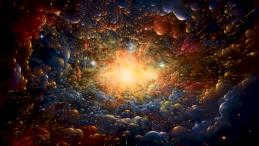
There are various theories in the scientific community regarding the origin of the universe, but the prevailing one is the Big Bang theory. Around 13.8 billion years ago, an event occurred that marked the beginning of universal history. At that time, everything that exists in the Universe today was concentrated in a minuscule point known as a cosmological singularity.
– This singularity was incredibly small, much smaller than an atom, and it rapidly expanded to become larger than the observable universe. Its expansion rate was enormous,” explains Valery Rubakov, a leading researcher at the Institute of Nuclear Research of the Russian Academy of Sciences, professor, Ph.D.
The rapid expansion of our newborn Universe, likened to a balloon inflating in all directions simultaneously, is known as “inflation”. During this phase, space experienced a nearly instantaneous expansion.
Does the universe have company?
It is challenging for us to fathom the emergence of everything from nothingness, but scientists assert that it happened just so. The key component was an immense energy, which spawned not only our universe but also potentially parallel worlds.
– Envision a container of champagne. It is sealed, we cannot perceive anything inside. We unseal the cork, and suddenly numerous bubbles emerge within it, because there is energy within this champagne – the gas infused into it. And the emergence of the Universe is akin to the birth of one of the bubbles that materialized at some point within this container. So is our Universe – it resembles one of the countless billions of other universes that materialize in a vacuum, supposedly from nothing,” says Yuri Balega, an astronomer and director of the Special Astrophysical Observatory of the Russian Academy of Sciences.
Regardless, science still lacks the ability to answer the question, what precisely existed before the Big Bang and whether there is something beyond our Universe.
The origin of particles
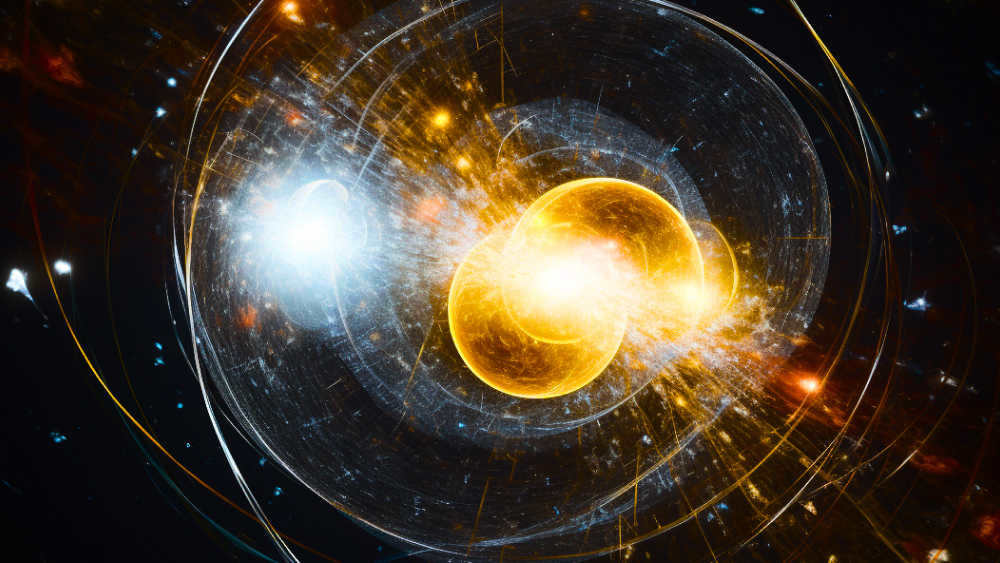
One way or another, the universe has embarked on a lengthy evolutionary journey. According to most scientists, the process of matter formation began during the expansion of the universe.
– In reality, a hydrogen nucleus is composed of a single elementary particle, a proton. These particles, protons and neutrons, have existed in the universe since its earliest moments. Thus, the chemical evolution of the universe in the first few tens of minutes consists of hydrogen and helium,” explains Dmitry Vibe, a Doctor of Physical and Mathematical Sciences and the Head of the Department of Physics and Evolution of Stars at the Institute of Astronomy of the Russian Academy of Sciences.
– Leptons and quarks are currently recognized as the fundamental particles that constitute the entire universe. These particles emerged during the occurrence of the Big Bang and were initially in an extremely hot state. As they gradually cooled down, they began to combine and form the matter that comprises living organisms like you and me. Specifically, quarks joined together to form protons and neutrons, which in turn created nuclei. These nuclei then came together to create atoms, and from atoms, molecules were formed. This is how the process continues to unfold,” explains Vladimir Kekelidze, the director of the Laboratory of High Energy Physics at the Joint Institute for Nuclear Research.
Let there be the dawn of a new era
Therefore, around 380 thousand years old, the youthful Cosmos experienced a significant drop in temperature, signaling the end of its fiery phase. Transitioning from a plasma state, it gradually transformed into a hot gas state. The once-trapped photons, the fundamental particles of light, were finally liberated.
As the gas gradually cooled, the universe began to gain more transparency. Ever so slowly, it evolved into the familiar entity we recognize today, brimming with celestial bodies and vast galaxies.
The semolina principle: a closer look at stars and galaxies.
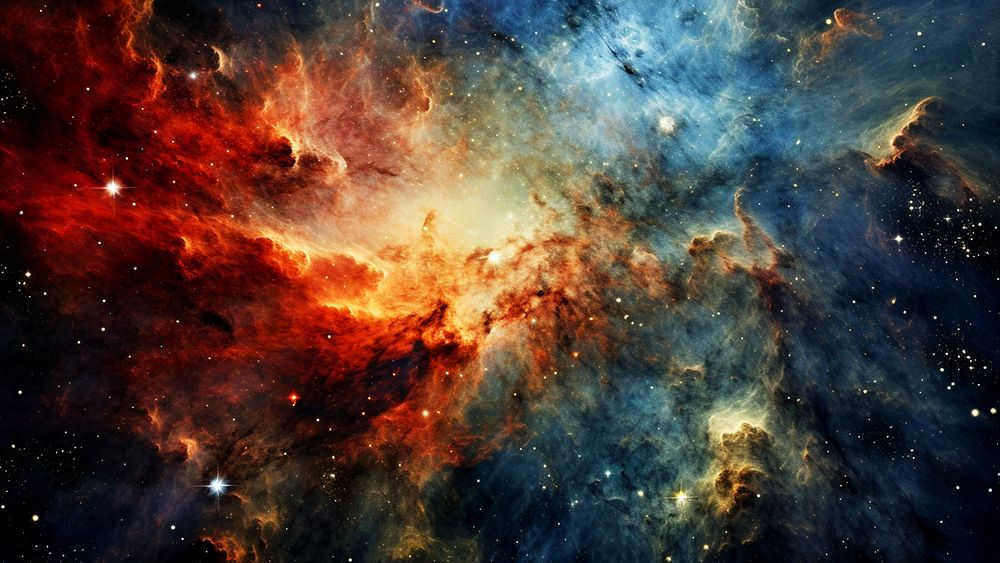
However, what caused the uneven distribution of stars and galaxies in the Universe? In reality, the hot plasma that made up the Universe after the Big Bang was not uniform at all. Even after the Universe became transparent and the hot stage ended, these irregularities remained, albeit barely noticeable, like small lumps in a fabric.
It’s similar to boiling porridge without stirring it and letting it cool down. The cooled porridge is likely to have lumps in it. The same process occurred in the cosmic cauldron: stars and galaxies formed from the irregularities and clumps of matter in the cooling Universe.
– In areas with blue spots, there is a lower level of radio emission, while in areas with red spots, there is a higher level. However, the difference between them is approximately one millionth. What does this fascinating map of relic radio emission signify? We have captured and documented the moment when matter and light separate from each other. Consequently, light carries the imprint of denser matter regions. Where there is more light and radio emission, there is denser matter, – explains Vladimir Samodurov, a senior researcher at the Pushchino Radio Astronomy Observatory.
The Origins of the First Stars
Evidently, the initial celestial bodies to emerge were colossal stars, which served as the precursors to subsequent stars, including our very own Sun.
– These luminaries were extraordinarily massive, leading to their rapid lifespans and rapid consumption of fuel: the more massive the star, the faster its burning rate and the more vigorous the reactions. As a result, these immensely massive stars initiated the synthesis of heavy elements, commencing with carbon. These stars exploded with great speed, dispersing matter and enriching the cosmos. From this enriched matter, the stars and galaxies that we currently observe were formed,” Dmitry Vibe explains.
Complex reactions occurred in the depths of the first stars due to the tremendous temperatures at the atomic nucleus level. As a result, carbon was created from three helium nuclei, magnesium from two carbon atoms, neon from magnesium, and so on, until iron was formed from silicon. This ongoing process of transforming chemical elements is known as “thermonuclear fusion” and continues to occur in the hot cores of stars today. It is thanks to the stars that planets, including our Earth, were able to form.
Simultaneously with the formation of stars, their clusters were also created, which eventually came together to form galaxies.
– It is believed that the largest stars or clusters of stars served as the central cores of protogalaxies. Subsequently, the smaller stars gradually gravitated towards these cores, creating a dynamic concentration of mass, – Yuri Balega explains.
The Formation of Planets
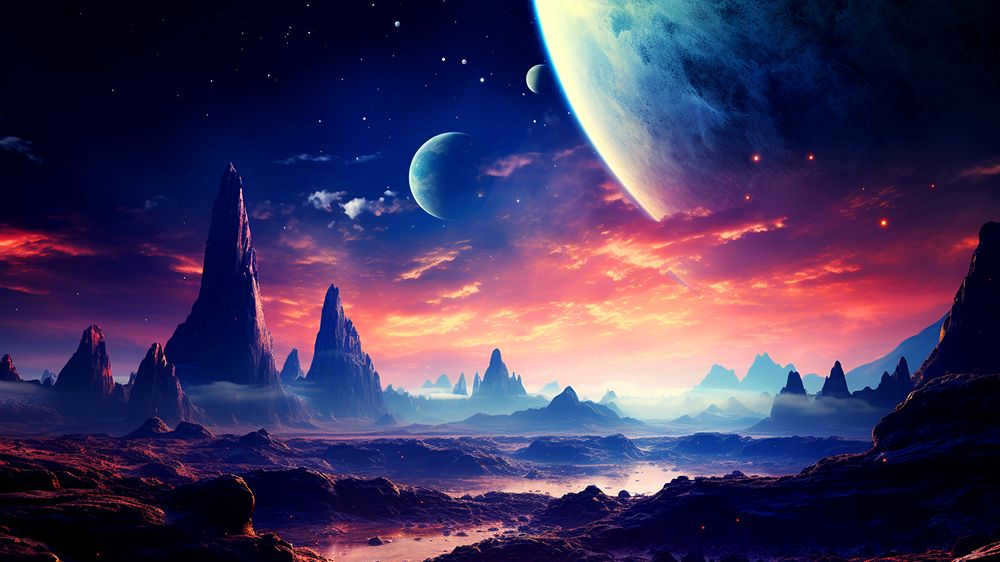
Therefore, after approximately one billion years, the Universe was already teeming with stars and galaxies, within which planets eventually began to take shape. These celestial bodies originated from the remnants of matter left over from the Big Bang, as well as from the elements forged within the cores of stars.
– The era of planetary formation likely commenced several billion years following the Big Bang, when the processes of thermonuclear fusion enabled the accumulation of sufficient matter that could coalesce into planets,” Dmitry Vibe explains.
During the process of stellar birth, the conglomerate of dust and gas resembles a spinning wolf, gradually gaining speed and compacting towards the center. This is how a star forms at its core, accompanied by the creation of a surrounding disk.
The small portion of the universe that is visible to us
However, the stars, planets, and other cosmic bodies that scientists refer to as baryonic matter make up only a fraction of the entire universe. It is like a seasoning in a dish made up of various ingredients, as it accounts for less than 5% of the total composition of the Universe.
Now let’s talk about ¼ of the universe, which is made up of dark matter. Unlike baryonic matter, dark matter does not emit or absorb light and has very little interaction with light. However, it does clump together and is particularly abundant in galaxies. Although it is everywhere, we cannot feel or touch it in any way. The existence of dark matter was discovered in the twentieth century through observations of galaxy rotation and subsequent calculations. However, scientists are still unsure about the particles that make up this mysterious matter.
Dark matter constitutes only a third of the Universe’s mass, alongside baryonic matter. The majority of its mass is composed of an entity referred to as dark energy. dark energy.
– Through the utilization of observations, astronomers have determined that around 5 billion years ago, at approximately mid-age, the Universe commenced an accelerated expansion. Consequently, there is a force exerting influence over this expansion. This force has been designated as dark energy,” states Yuri Balega.
Although the expansion of the Universe does not impact our planet or the Sun, we are unable to perceive it. However, the distant galaxies, which are loosely interconnected, are drifting apart, resulting in an increasing distance between them. It is projected that this expansion will persist, at least in the foreseeable future.
What is the ultimate fate of the universe?
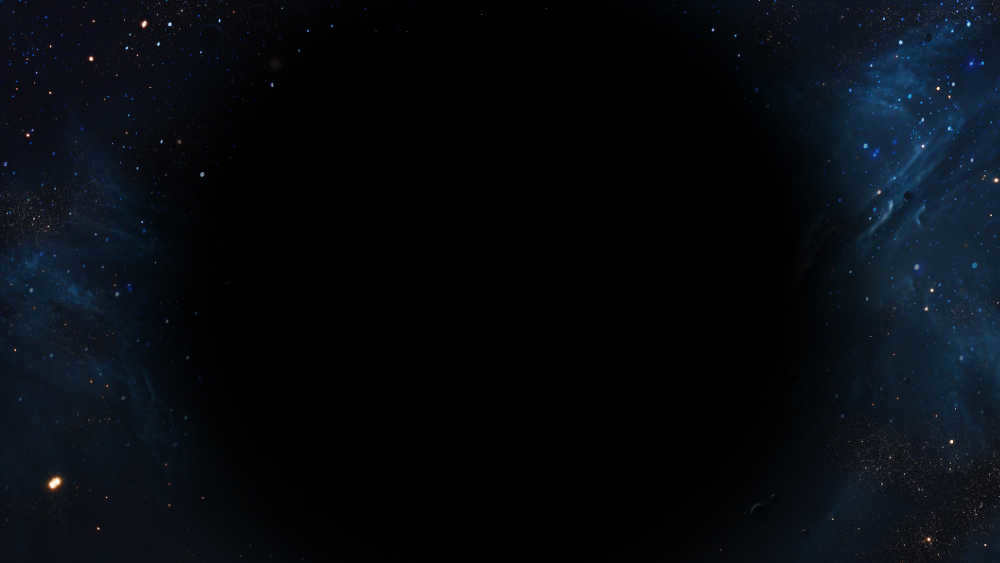
There are various perspectives. One potential scenario is that the expansion will eventually cease, and a reverse process will commence – the Universe will collapse into a minuscule point, akin to the initial starting point. Another possibility exists: the Universe will expand to such an extent that all matter within it will simply disintegrate and vanish – the dark energy will effortlessly tear it apart into atoms, returning it to the vast void. Subsequently, perhaps, a new Universe will emerge. Nevertheless, it will manifest as a distinct cosmos with a unique narrative.
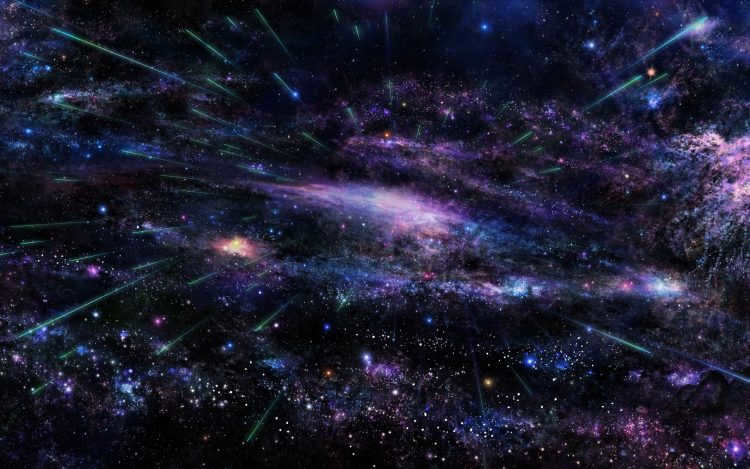
- Galaxies
What is the cosmos? In brief, it is the aggregationthe aggregation of everything that exists. It encompasses all time, space, matter, and energy, created and growing for 13.8 billion years. The exact extent of our universe is uncertain, and there are no definitive forecasts of its ultimate fate.
The term “universe” originates from the Latin word “universum”. Cicero was the first to use this term, and it was subsequently adopted by Roman writers. This concept referred to the world and the cosmos, encompassing the Earth, all known living beings, the Moon, the Sun, the planets (Mercury, Venus, Mars, Jupiter, and Saturn), as well as the stars.
Occasionally, the term “cosmos”, which means “world” in Greek, is used instead of “universe”. Additionally, “nature” and “everything” were among the terms used.
The modern understanding of the universe includes everything that exists – our solar system, the Milky Way, and other structures. It also encompasses various forms of energy, space-time, and physical laws.
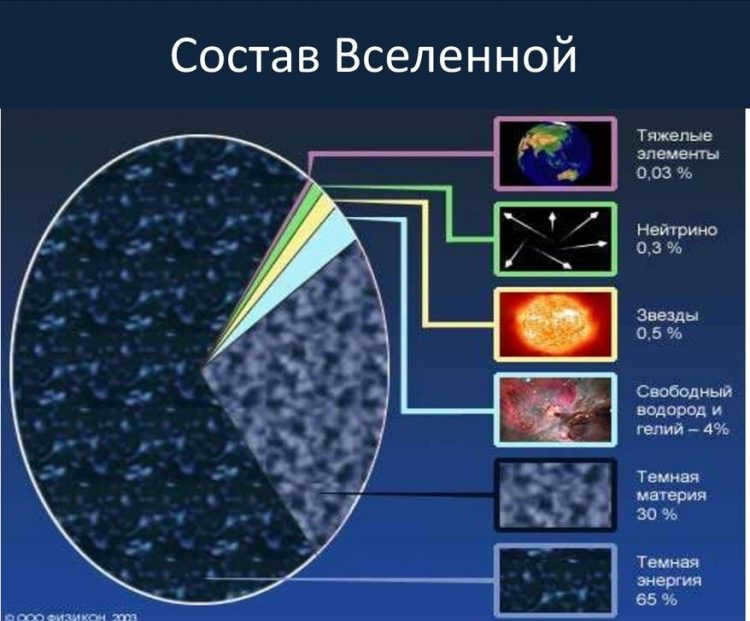
The question of how the universe came into existence has always been one of the foremost inquiries in the human mind. There is no definitive answer to this query and it is unlikely to be discovered in the immediate future. However, scientific research is currently focused on developing a theoretical framework to explain the origin of our universe.
Creationism: God is the Creator of all things
Among the various theories regarding the origin of the universe, Creationism stands as the earliest and most enduring belief. It is a profound and convenient perspective that may always hold relevance. Interestingly, numerous physicists, despite the perceived opposition between science and religion, have maintained their belief in God.
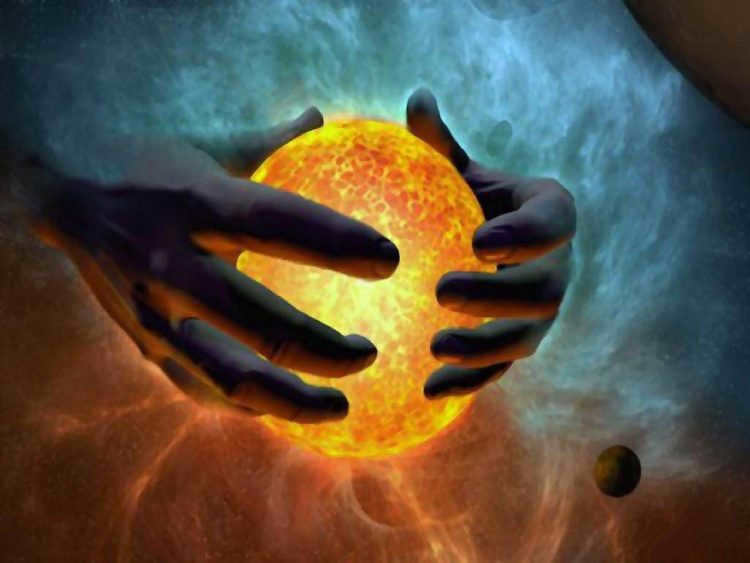
For instance, Albert Einstein once stated:
“Every dedicated scientist must, in some capacity, be a person of faith. Otherwise, they would be unable to conceive that the immensely intricate interconnections they observe are not of their own creation.”
Hot Universe Model: The Big Bang Theory
The Big Bang Theory, also known as the hot universe model, is perhaps the most widely accepted explanation for the origin of our universe. It not only addresses the formation of chemical elements but also provides insights into their current prevalence.
According to this theory, approximately 14 billion years ago, there was no space or time as we know it. Instead, all the mass of the universe was concentrated in an incredibly dense point called a singularity. This singularity, due to its inherent irregularities, eventually led to a monumental event known as the Big Bang. Since then, the universe has been continuously expanding and gradually cooling.
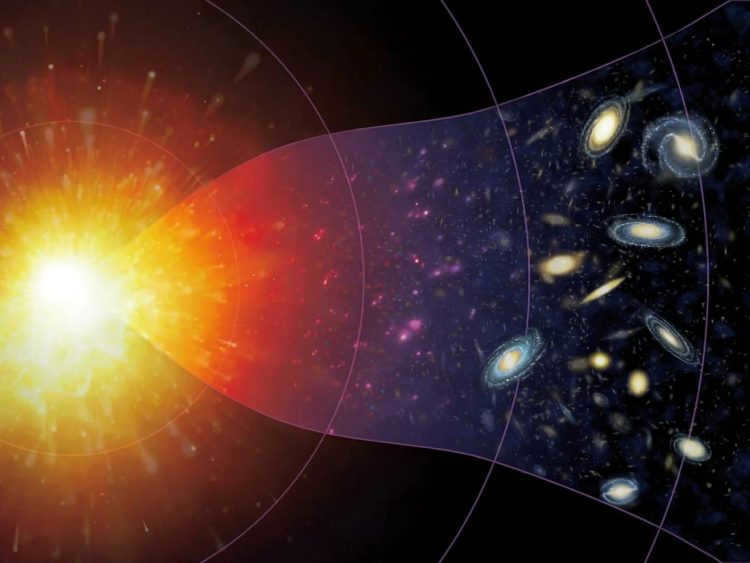
The quantum chaos phase is the term used to describe the initial 10 to 43 seconds after the occurrence of the Big Bang. During this period, the nature of the universe cannot be explained using the current understanding of physics. At this stage, the continuous unified space-time undergoes a disintegration into quanta.
As time progresses and reaches 10,000 years, the energy of matter gradually surpasses the energy of radiation, leading to their separation. Matter begins to dominate over radiation, resulting in the emergence of a relic background.
The discovery of cosmological redshift and relic radiation provided strong evidence in support of the Big Bang theory. These two phenomena serve as the most compelling arguments for the accuracy of the theory.
Furthermore, the distribution of matter underwent significant amplification due to the separation caused by radiation, leading to the emergence of galaxies and even more massive structures known as super galaxies. This process played a crucial role in shaping the laws of the Universe as we perceive them in the present day.

The concept of a Universe that is constantly growing
It has been confirmed that Galaxies and other celestial bodies are continuously moving apart, indicating that the Universe is in a state of expansion.
The model of the expanding Universe explains the phenomenon of expansion itself. It does not delve into the specific origins or reasons behind the start of the Universe’s expansion. Most models are based on the principles of the general theory of relativity and its geometric interpretation of gravity.
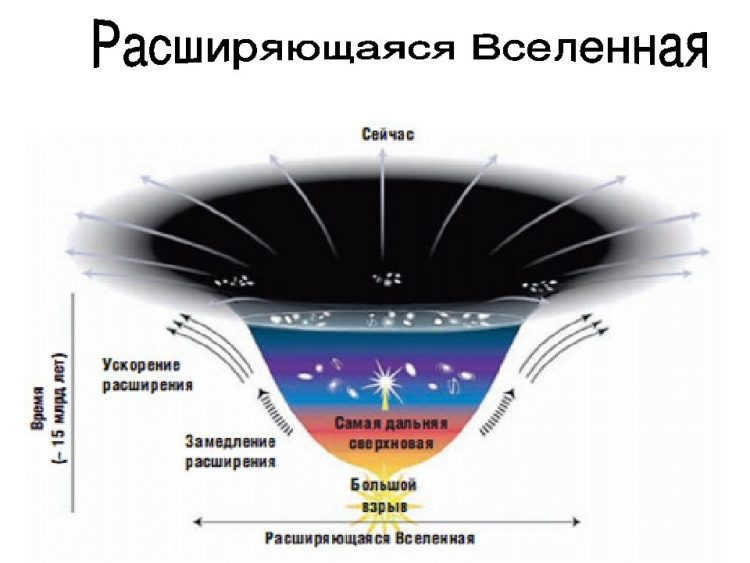
Redshift is the phenomenon where the radiation frequencies from distant sources appear to decrease. This can be explained by the fact that galaxies and quasars are moving away from each other, indicating that the Universe is expanding.
The cosmic microwave background radiation is like a remnant of the Big Bang. In the past, the Universe was a hot plasma that gradually cooled down. Even now, there are stray photons from that time, which create a background of cosmic radiation. In the earlier stages of the Universe, this radiation was much more intense. Today, its spectrum corresponds to that of a solid object with a temperature of only 2.7 Kelvin.
The Concept of the Development of Vast Structures in the Field of Science
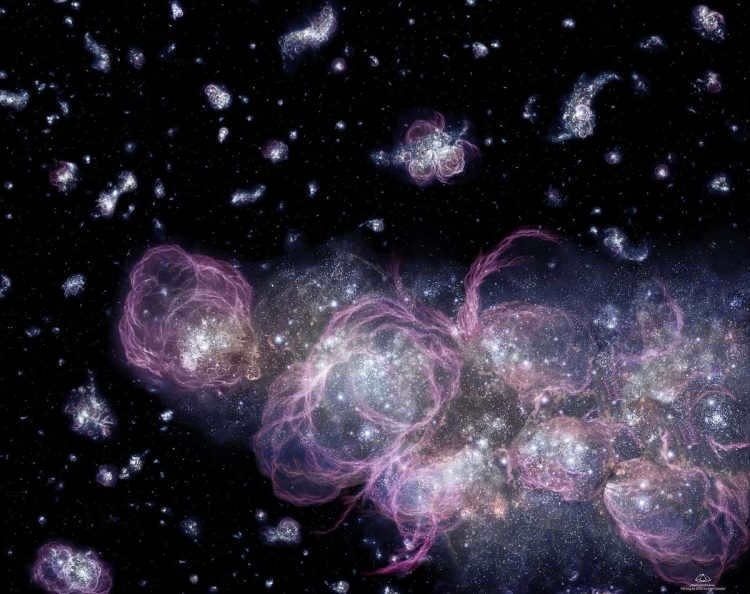
According to the data on the relic background, during the separation of radiation from matter, the Universe was mostly uniform and there were only minimal fluctuations in matter. This poses a significant challenge.
The second challenge involves the cellular structure of galaxy supergroups and the spherical structure of smaller galaxy clusters. Any theory that aims to explain the origin of the Universe’s large-scale structure must address these two problems.
The current theory for the formation of both large-scale structure and individual galaxies is known as the “hierarchical theory.”
The concept is that initially, galaxies were small in size, like the Magellanic clouds, but over time, they merged to form larger and larger galaxies.
There has been a recent questioning of the validity of the theory.
The theory of strings
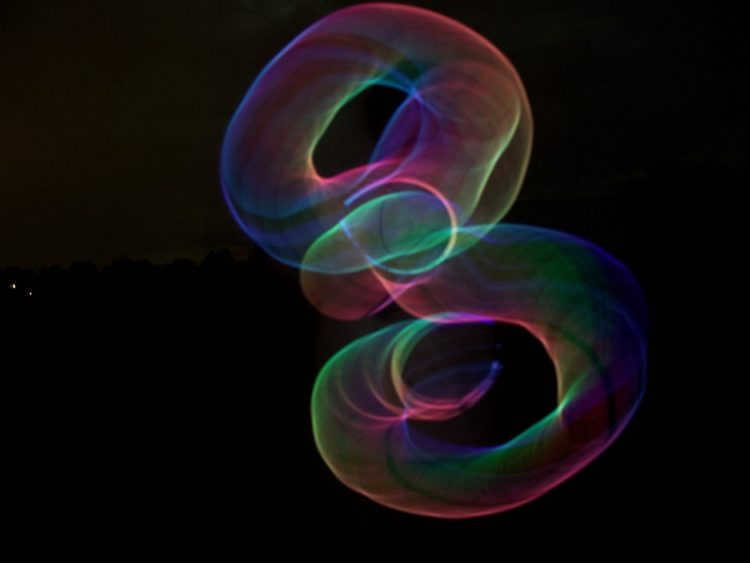
This theory presents a challenge to the idea of the Big Bang as the initial moment of the universe’s formation.
According to the concept of string theory, the universe has existed for eternity. This hypothesis explains the interaction and structure of matter, which is composed of specific particles known as quarks, bosons, and leptons. These particles serve as the building blocks of the universe, as their minuscule size prevents further division.
A unique aspect of this theory is the assertion that these particles are actually ultramicroscopic strings that constantly vibrate. Individually, they lack material form and exist purely as energy, which collectively gives rise to all the physical elements of the cosmos.
An instance in this scenario could be fire: when observed, it seems to be a substance, but in reality, it is immaterial.
The Chaotic Inflation Theory – Andrei Linde’s Hypothesis
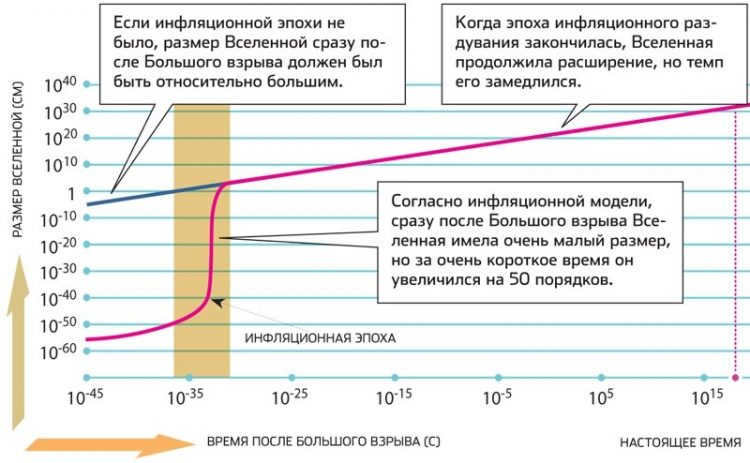
According to this hypothesis, there exists a particular scalar field that exhibits inhomogeneity throughout its volume. In other words, different regions of the universe possess distinct values of this scalar field. Consequently, in regions where the field is weak, there are no significant changes, whereas regions with a strong field experience expansion (known as inflation) as a result of its energy, ultimately giving rise to new universes.
This scenario implies the presence of multiple worlds that emerged at different times and possess their own unique collection of elementary particles and, consequently, natural laws.
Lee Smolin’s Hypothesis
One well-known theory proposed by Lee Smolin challenges the notion that the Big Bang marked the beginning of the Universe. Instead, Smolin suggests that it was merely a phase transition between two different states of the Universe. According to his hypothesis, the Universe existed in the form of a cosmological singularity that closely resembled the singularity found in black holes prior to the Big Bang. This leads Smolin to propose the intriguing idea that the Universe may have actually originated from a black hole.
The Development and Evolution of the Universe
What was the mechanism behind the progression and evolution of the universe? Throughout the following billion years, the force of gravity led to the attraction of denser areas. This cosmic process resulted in the formation of gas clouds, stars, galactic structures, and various other celestial objects.
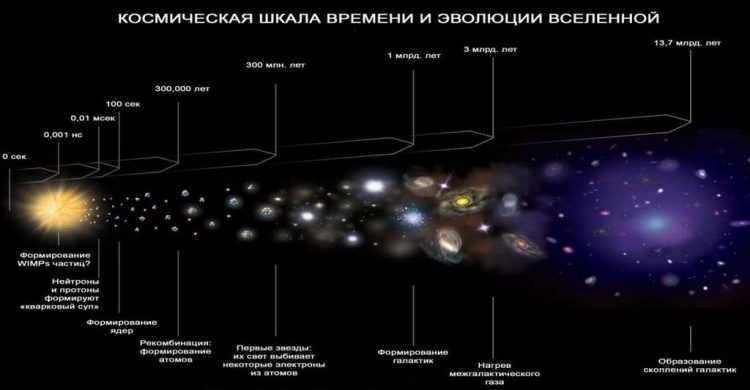
This era is known as the Structural Era because it was during this time that the modern Universe came into existence. Visible matter was organized into different structures, such as stars forming galaxies, and those galaxies forming clusters and superclusters.
It is difficult to imagine a time 13.7 billion years ago when the entire universe was a singularity. According to the Big Bang theory, one of the leading explanations for the origin of the universe and all matter within it, everything was compressed into a point smaller than a subatomic particle. However, if we can still accept that, then we must wonder: what existed before the occurrence of the Big Bang?
This question of modern cosmology dates back to the fourth century AD. 1600 years ago, the theologian Augustine the Blessed and one of the greatest physicists in the 20th century, Albert Einstein, attempted to comprehend the nature pre-universe. They reached the conclusion that there was no existence of a “before.”
Today, numerous theories are being proposed by humans.
The Theory of Multiple Universes.
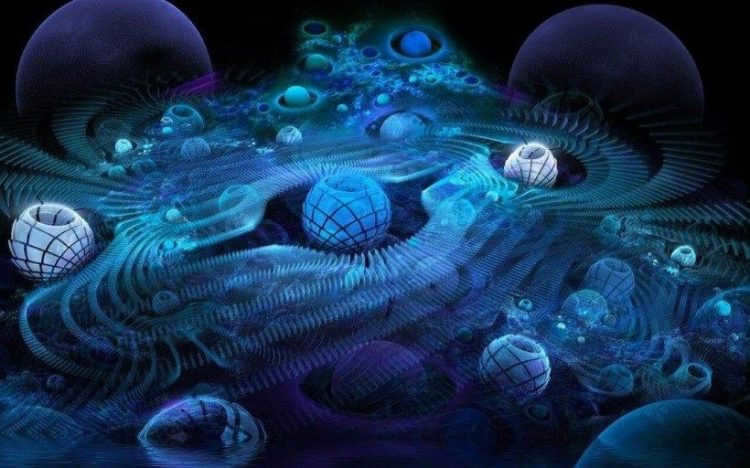
What if our Universe is a descendant of another, older Universe? Some astrophysicists are of the opinion that the remnants of radiation from the big bang can provide insight into this narrative.
According to this hypothesis, in the initial moments of its existence, the Universe underwent a rapid expansion. The hypothesis also accounts for the variations in temperature and density of the relic radiation and suggests that these variations should be uniform.
However, it has been discovered that they are not. Recent investigations have revealed that the universe is actually asymmetrical, with certain regions exhibiting more variations than others. This finding has led some cosmologists to conclude that our Universe had a “mother”(!)
In the theory of chaotic inflation, this concept becomes significant: the endless succession of inflationary bubbles creates a multitude of universes, and each universe generates even more inflationary bubbles in a tremendous number of universes Multiverses.
Theory of white holes and black holes
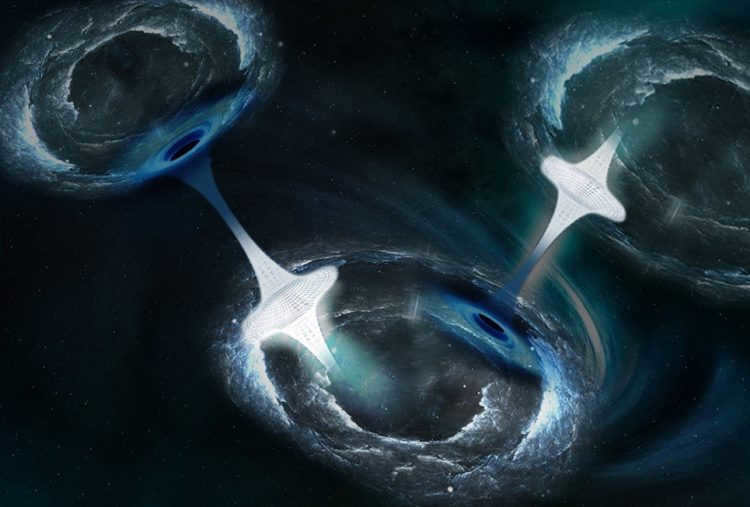
However, there exist theories that aim to elucidate the origin of the singularity prior to the occurrence of the big bang. If we consider black holes as enormous waste bins, they are highly plausible contenders for the initial collapse, implying that our expanding cosmos might be analogous to a white hole – the exit point of a black hole, with each black hole within our universe potentially housing an independent universe.
Some researchers argue that the singularity’s formation is fundamentally connected to a recurring phenomenon known as the “big bounce”. According to this theory, the universe goes through a perpetual cycle of expansion and contraction, with each collapse leading to a new phase of existence.
According to this theory, the perpetual cycle of expansion and contraction, known as the “big bounce”, suggests that all singularities and collapses serve as transitions to a different phase of the universe’s existence.
The theory of a cyclic universe
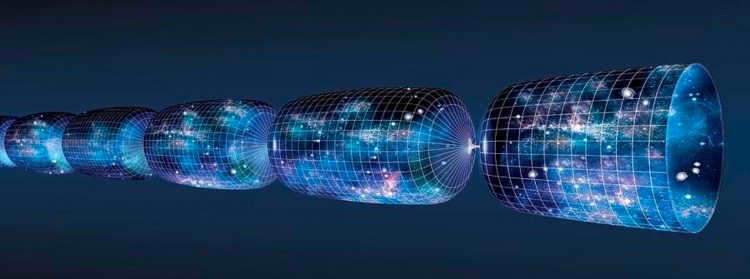
One possible explanation we can consider is the concept of a cyclic universe created by string theory. This theory proposes that every trillion years, new matter and energy are generated when two membranes or branes existing outside our dimensions collide with each other.
The question of what existed before the Big Bang still remains unanswered. It could be nothing, or it could be another Universe or a different version of our own. It’s also possible that there is an entire ocean of universes, each with its own unique laws and constants that determine the nature of physical reality.
Challenges Associated with Contemporary Theories on the Origin and Development of the Universe
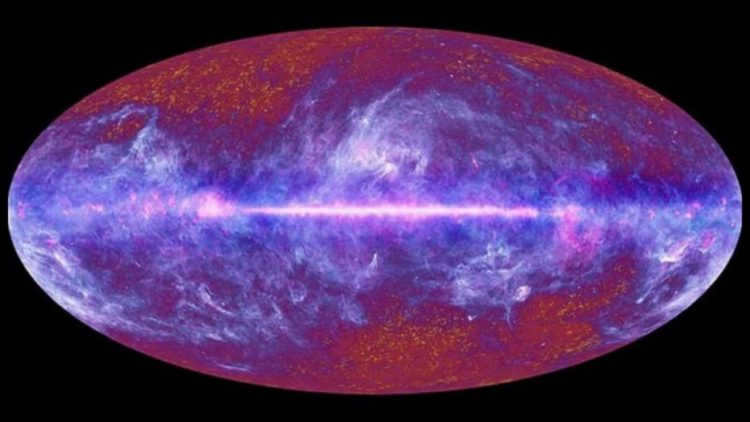
There have been recent challenges to many theories surrounding the Universe, both in theory and in observational evidence:
- One important question in cosmology is the shape of the universe. From a mathematical standpoint, we are confronted with the task of determining a three-dimensional spatial cross-section of the universe, a representation that best captures its spatial properties.
- We are uncertain about whether the universe is globally flat in terms of space, specifically if the laws of Euclidean geometry hold at the largest scales.
- Additionally, it remains unknown if the Universe is single-connected or multilinked. According to the standard expansion model, the Universe lacks spatial boundaries but may still be spatially finite.
- There are indications that the Universe may have originated from a state of rotation. The traditional understanding of nucleation is based on the concept of the isotropy of the Big Bang, which suggests that energy was evenly distributed in all directions. However, an alternative theory proposing the existence of an initial rotational motion of the universe has been put forward and has gained some supporting evidence.
Video
can be rephrased as
Visuals
or
Moving Images
.





